History (also partly including abridged and rewritten histories from here and here – all original rights acknowledged)
Robert Fletcher joined the paper mill business of Ralph Crompton and Nephews, Bleachers and Papermakers, Stoneclough and Manchester in 1830 shortly after it had opened, and rose through the ranks to eventually become manager of the whole mill. After the last of the Crompton brothers died the succession of the mill was offered to Robert Fletcher.
Fletcher controlled the mill until his death on 17 May 1865, when he was succeeded by his sons John and James, who were in turn followed by their sons who were also named John and James.
By 1897 the business had become a limited company, employing 200 workers – a number which would rise to 1,000 at the peak of production. There were 7 paper making machines, which produced only a fraction of the paper 3 more modern machines later produced. A second mill was opened in 1921, specialising in the production of cigarette papers and the company had sales offices in London and Manchester and agencies in many foreign countries.
The company was bought in 1986 by the Melton Medes conglomerate who reportedly turned a loss making business into a profitable one. However, as the price of wood pulp soared in the 1990s the business became untenable. The two sites were then owned as separate group companies – Robert Fletcher (Stoneclough) Limited, and Robert Fletcher (Greenfield) Limited. The Stoneclough site was closed in 2000 with the loss of 120 jobs, but despite this the remaining business continued to decline. In 2001 several suppliers and creditors applied to wind up both companies, forcing the overnight closure of the remaining Greenfield site. Both companies entered into administration in October 2001, and were finally being wound up in January 2007. However, to this day Robert Fletcher and Son Limited (incorporated on 17 November 1958) still remains as an active company, owned by Nottingham Industrialist Nat Puri.
Whilst the Stoneclough factory was quickly demolished and redeveloped into housing for nearby Manchester, the more rural Greenfield site has just been left to decay.
Our Explore
We left Norfolk slightly later than intended on a Friday night, so missed the sunset explore we had planned and instead headed straight to our luxurious accommodation that night – a motel on an industrial park on the outskirts of Rotherham! The next morning was a traditional early start, but we were rewarded with a beautiful sunrise as we drove through the northern tip of the Peak District National Park…
We soon parked up and made our access – which was certainly quite a challenging and exciting affair – I can’t really say much more than that…
I absolutely loved the three or so hours we spent exploring the mill – it really is a bit of a special time capsule, with machinery, tools, and the workers’ personal effects left abandoned from the day the site closed.
We began in the wood pulp storage area, where is would be separated and transferred through to the mashing machines…
As always, click on a photo to VIEW LARGE
We then moved on to the decaying offices, laboratory, and workers’ locker rooms…

A pinup in one of the lockers of Jo Guest in now defunct 90s lads’ mag Loaded.
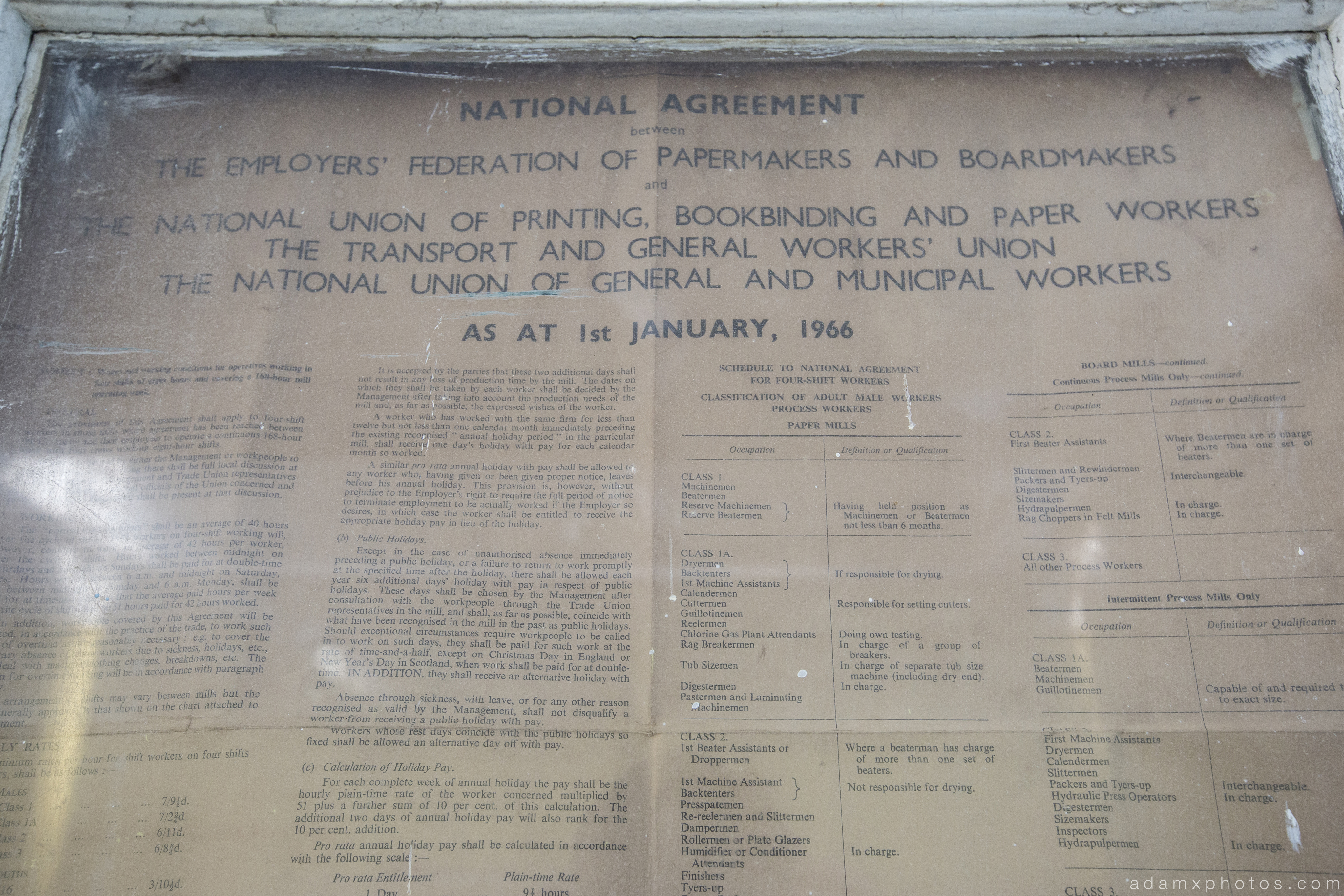
A copy of the 1966 Union workers’ Agreement – setting out agreed working conditions, hours, pay, etc. Unfortunately it was hard to photograph due to the reflection on the grimy perspex covering it…
The next part of the factory had the wood pulp mashing machines…
We then explored a small cloakroom area, with boots and other items left abandoned…
The next room was one of the largest, with the huge pulp rollers and greenery sprouting up everywhere…
The final section of the mill was the finishing area, where the paper was put onto rolls.
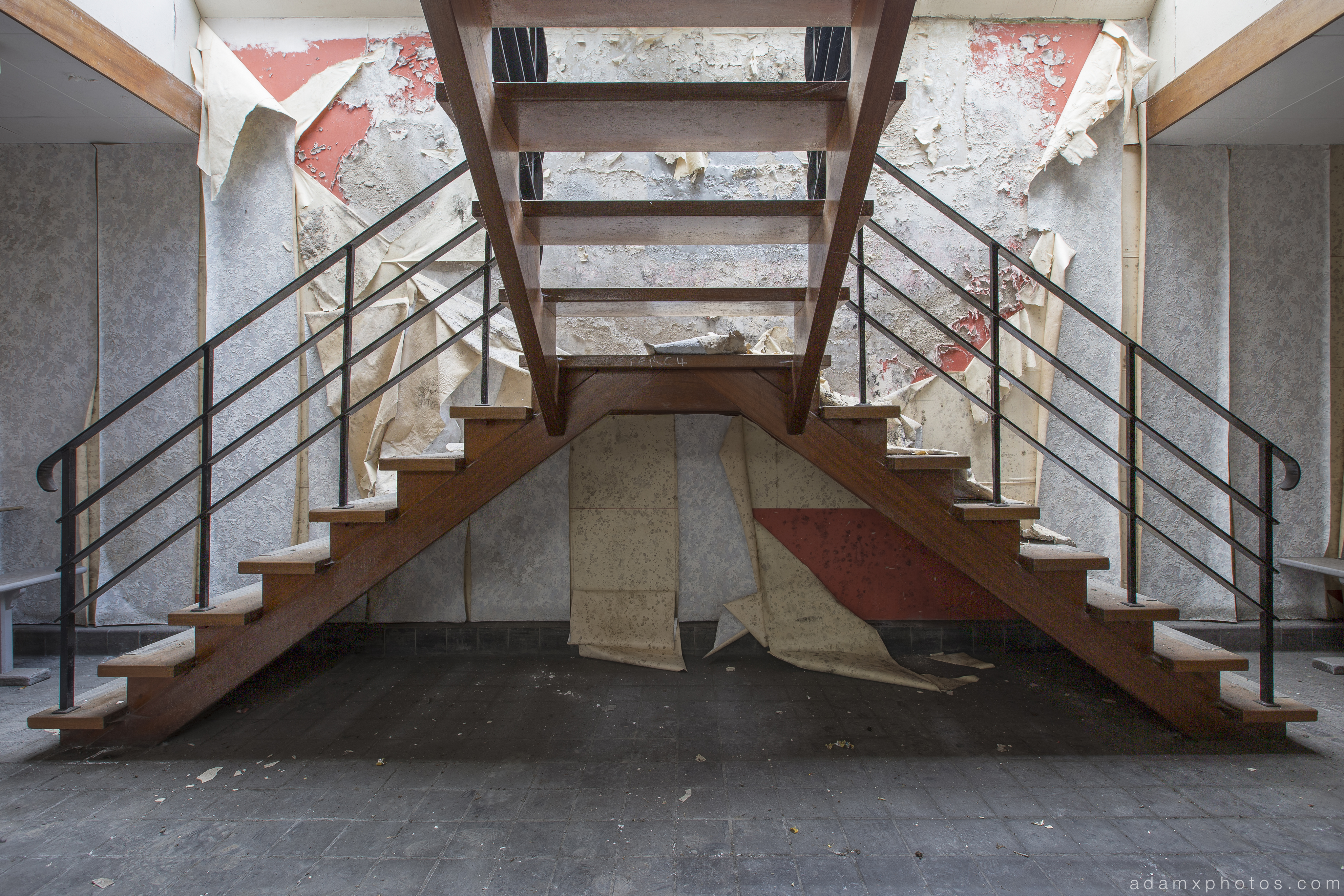
I liked this split staircase with peeling wallpaper goodness in the workers’ canteen…

A small office in the finishing area.

On the right are the large rolls on which the finished paper would be stored.

In a pitch black room we discovered this broken pipe, water gushing out… god only knows what effect this is going to have on the place if it isn’t turned off/fixed – there is active security on the site, so they may (or may not) deal with it at some stage I suppose…
We finished off the explore in the last part of the mill to be built – where larger more modern machinery was installed. Sadly it still failed to save the failing business..
…and I’ll leave you with a couple of shots of the mill, nestled in its rural surroundings.
Thanks for reading this pulp non-fiction.
Adam X
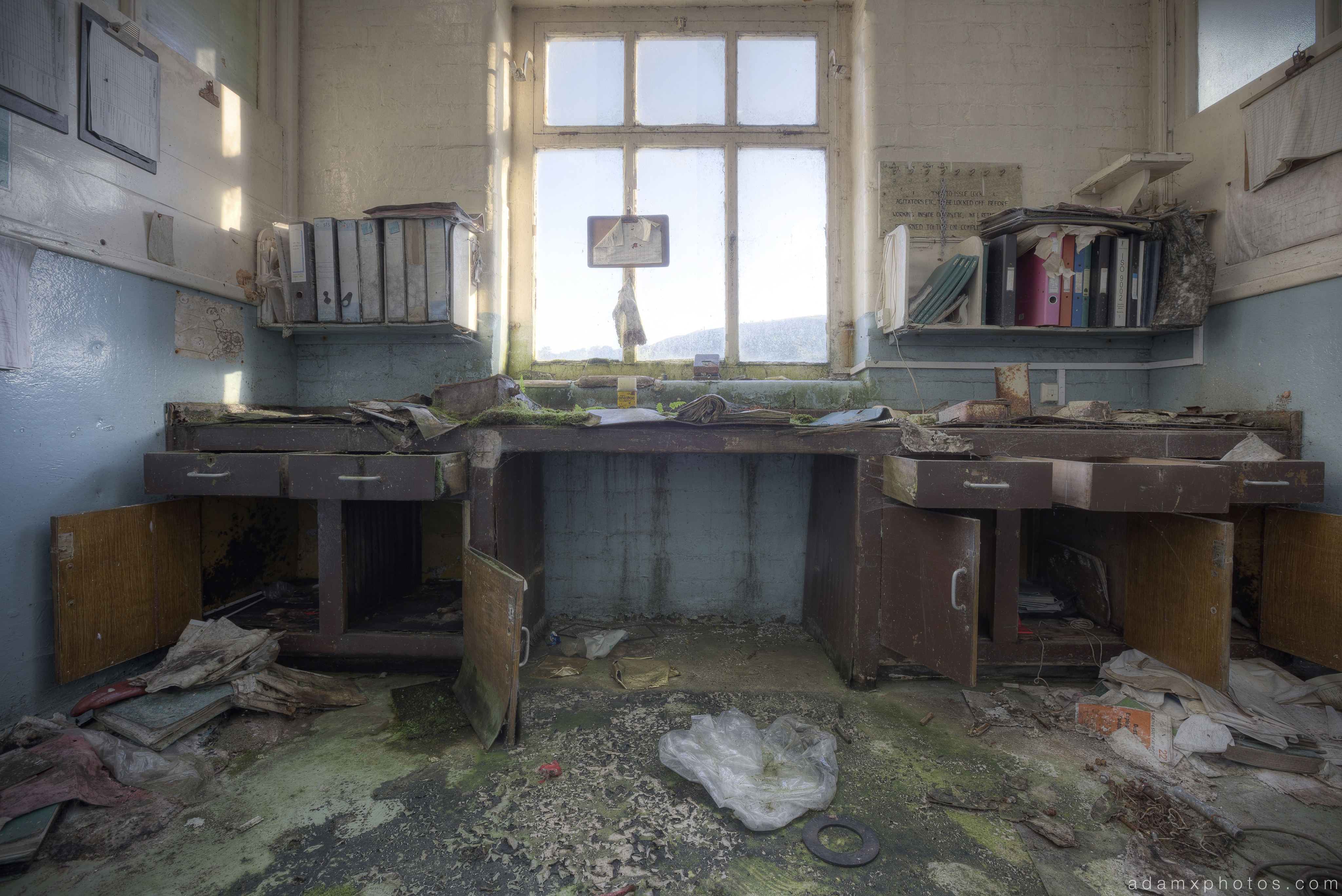
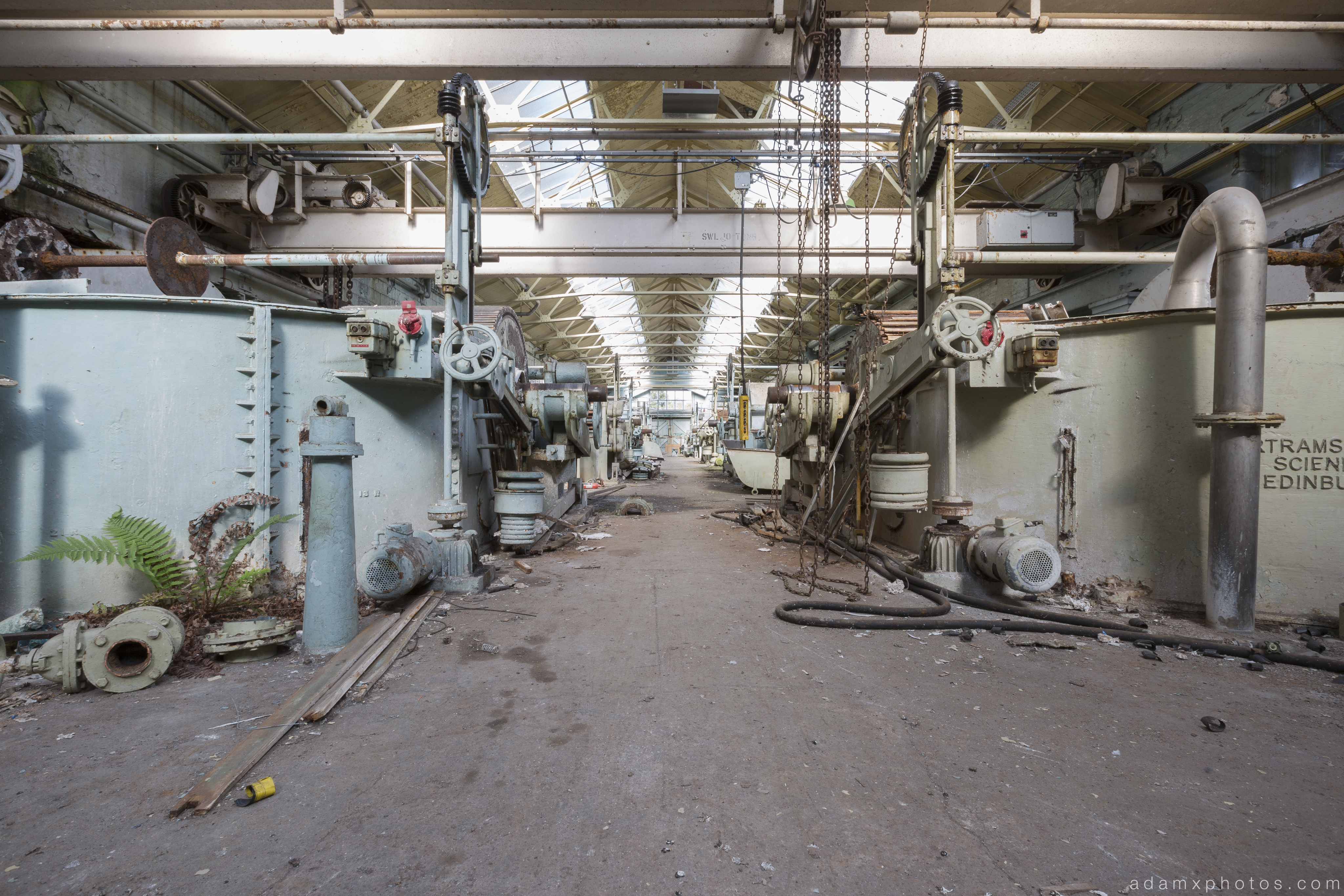

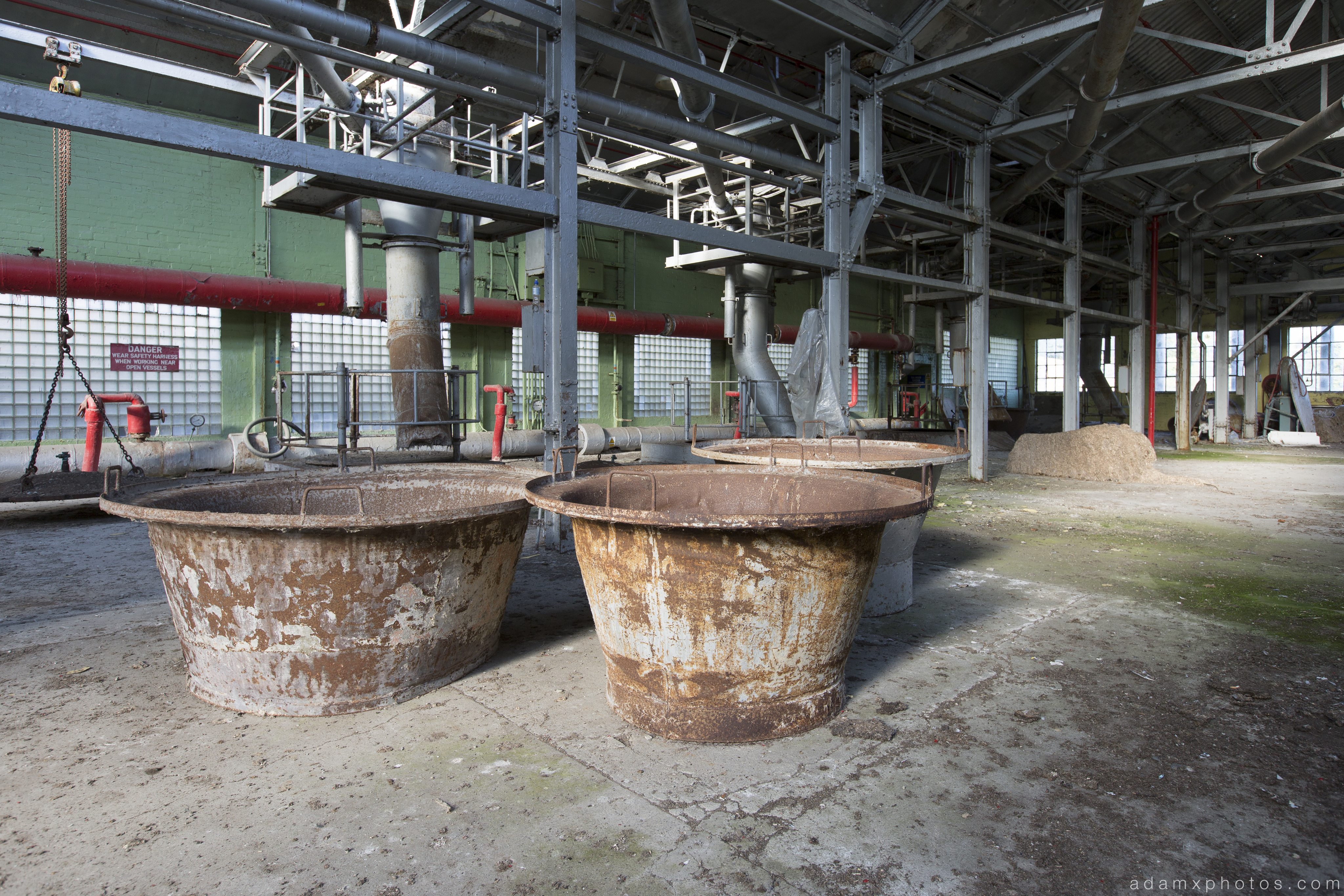
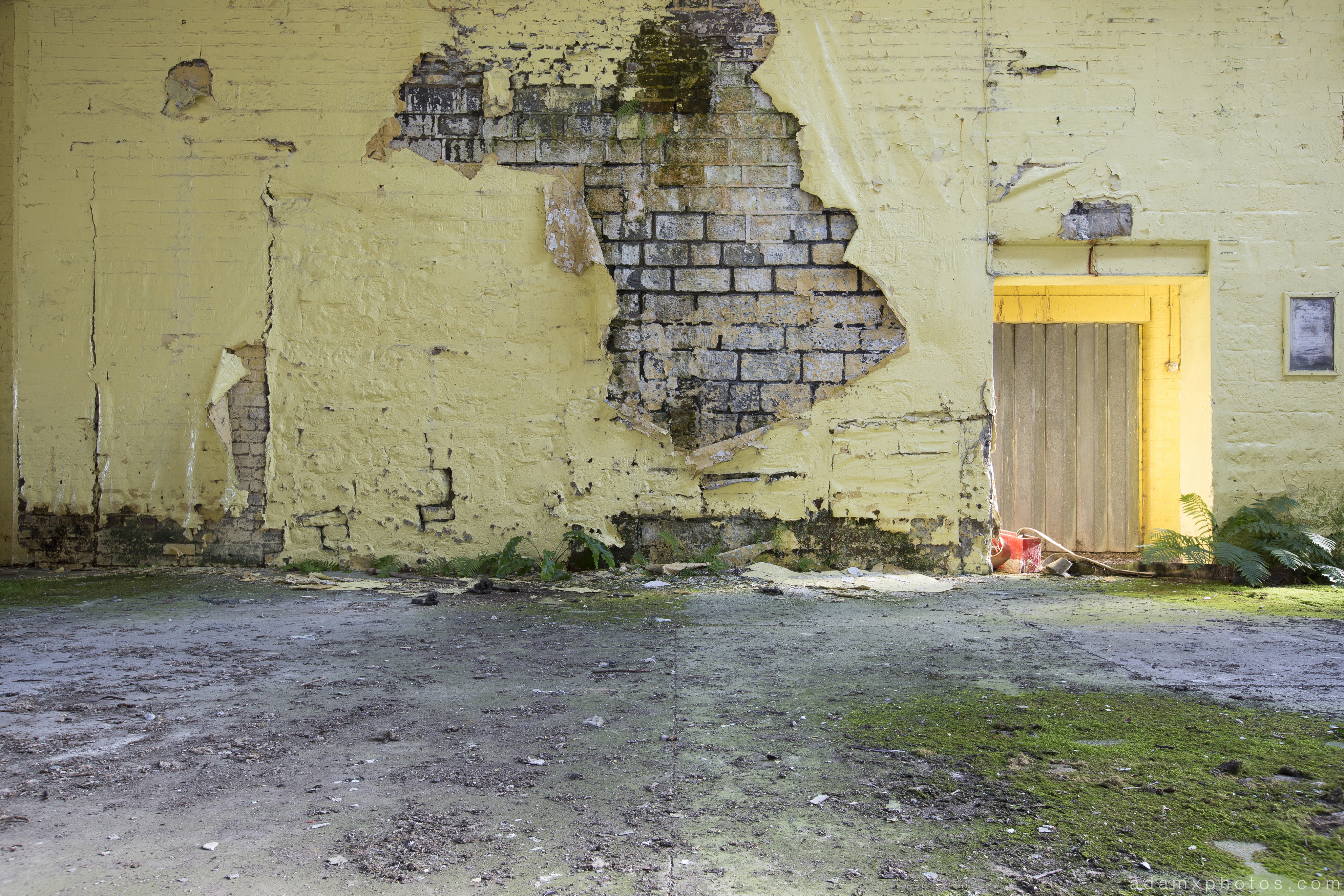
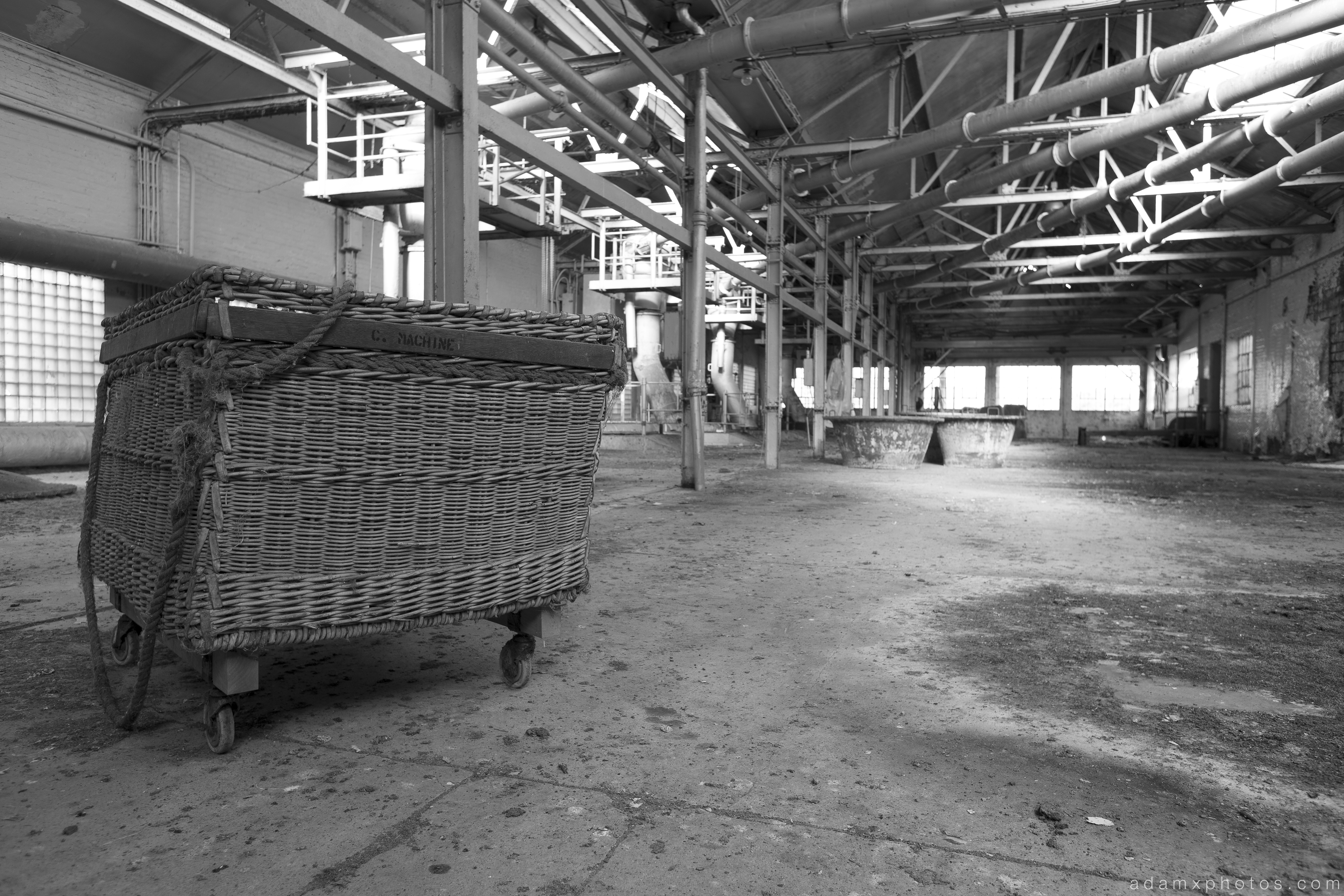


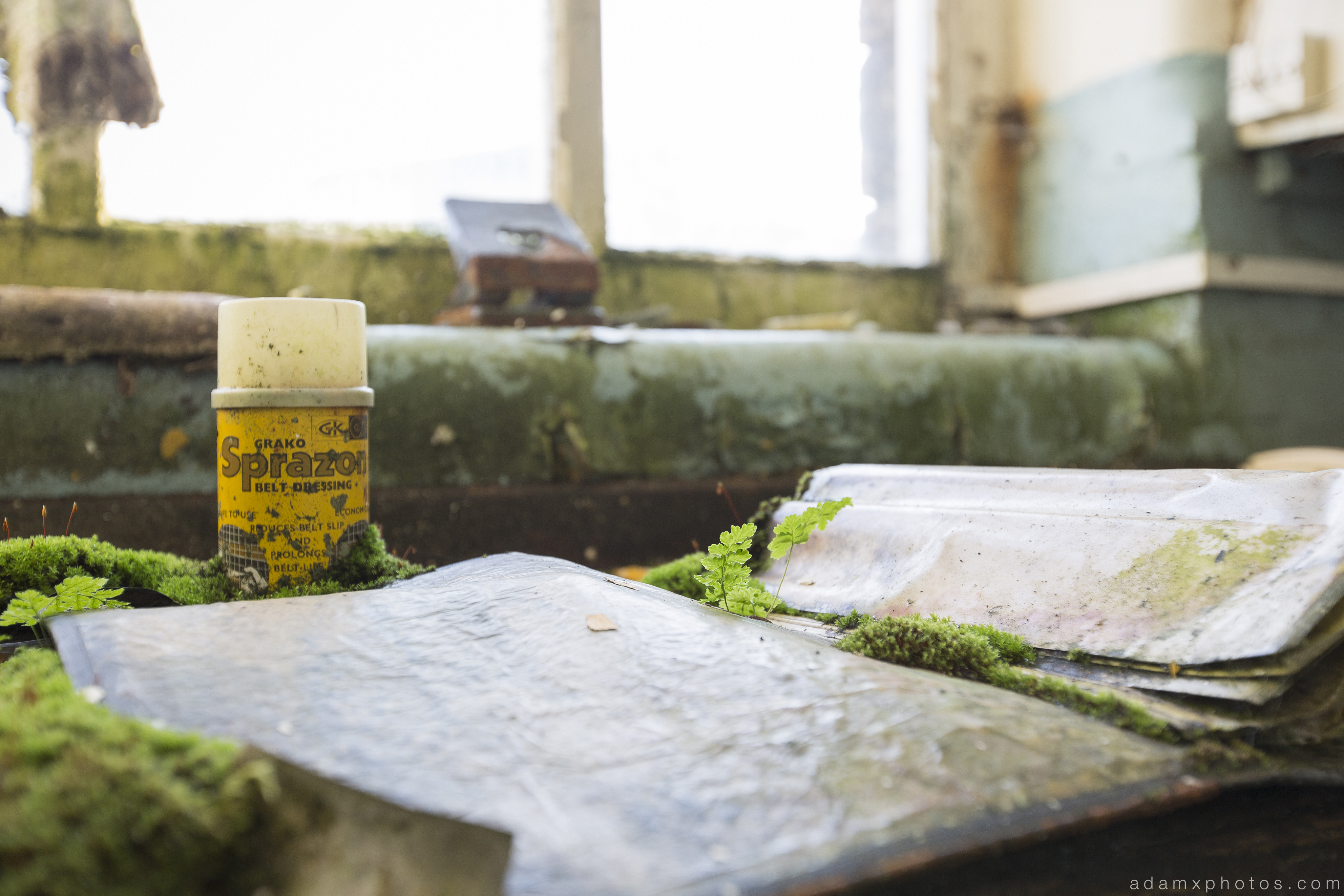
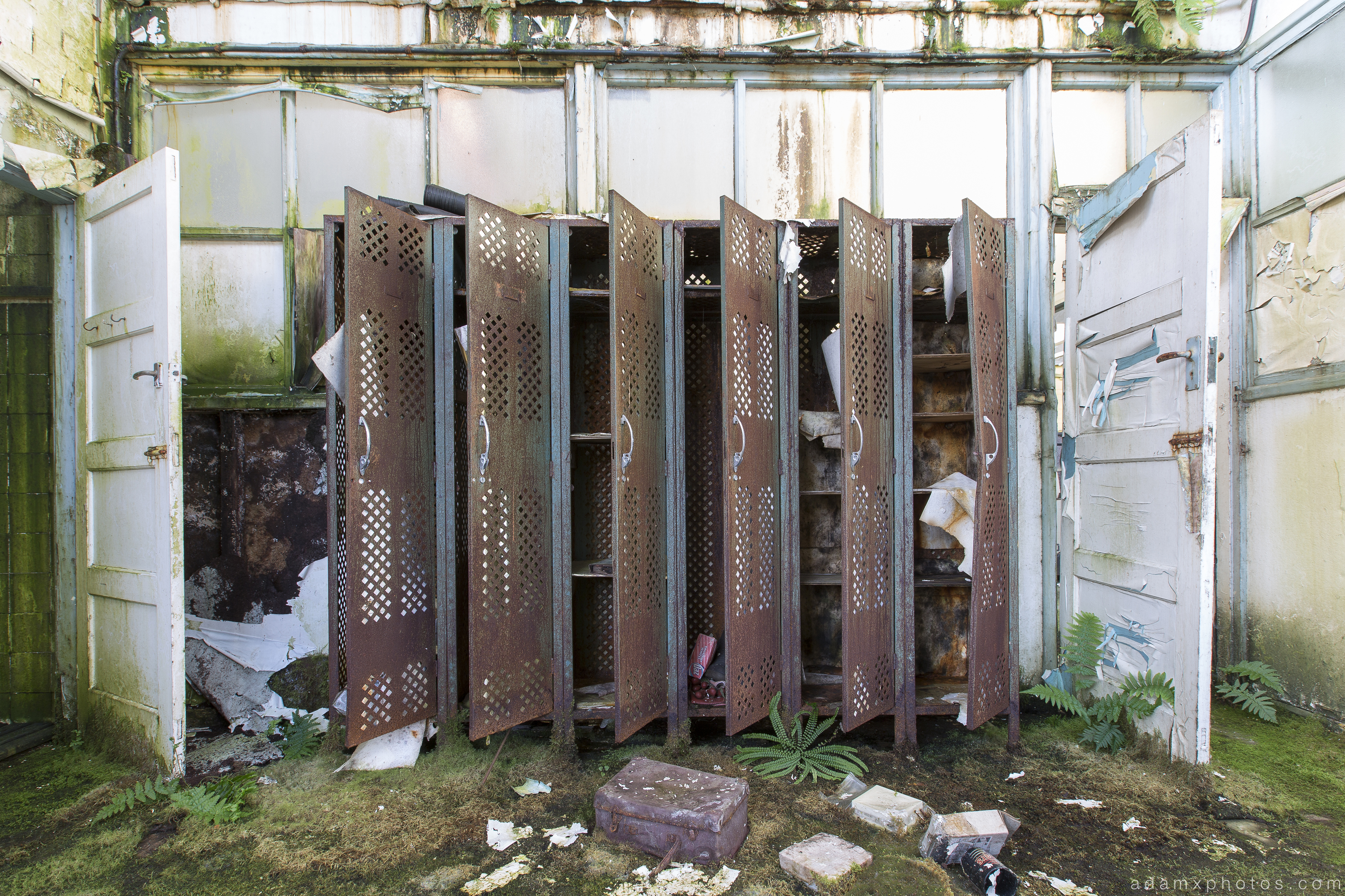
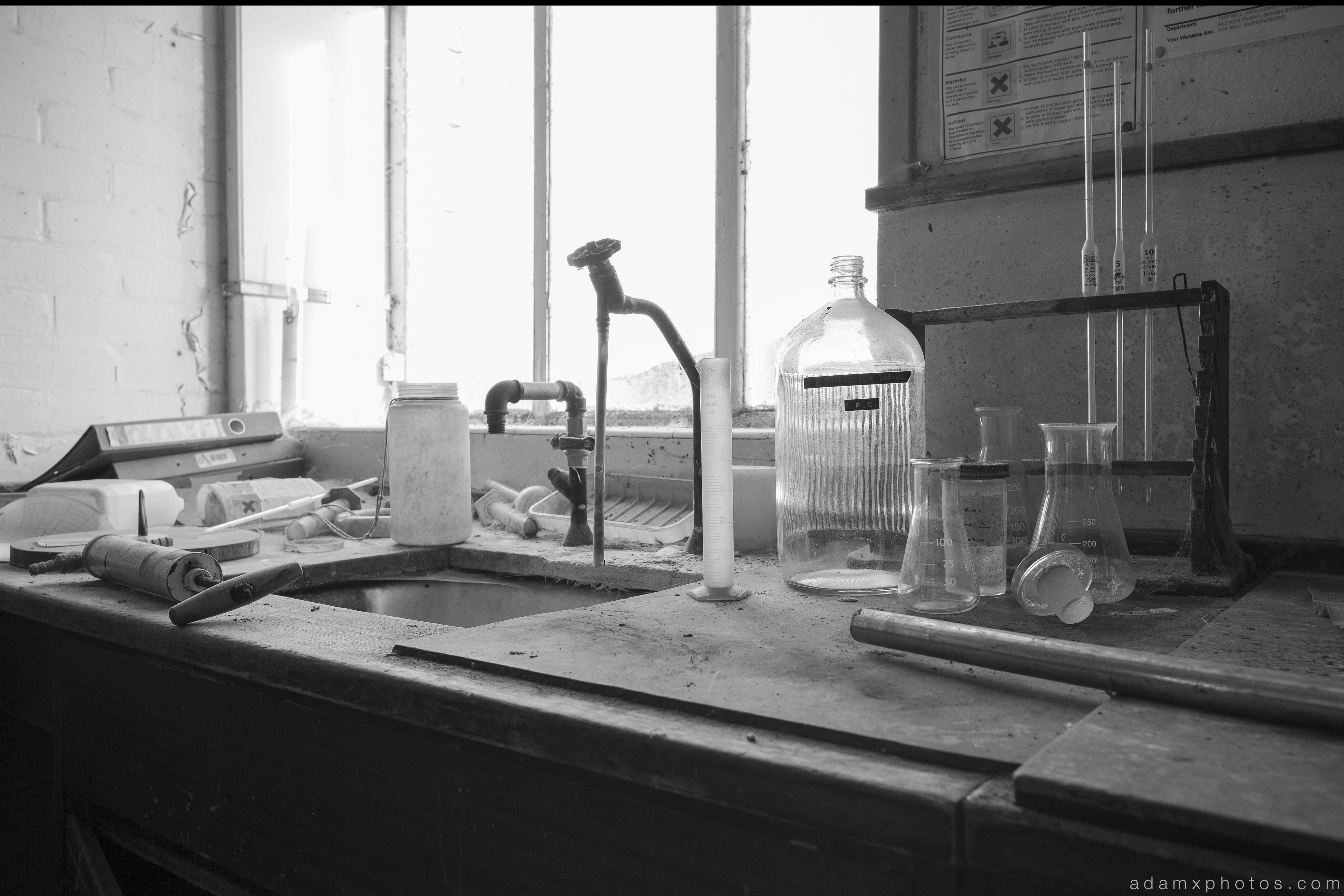
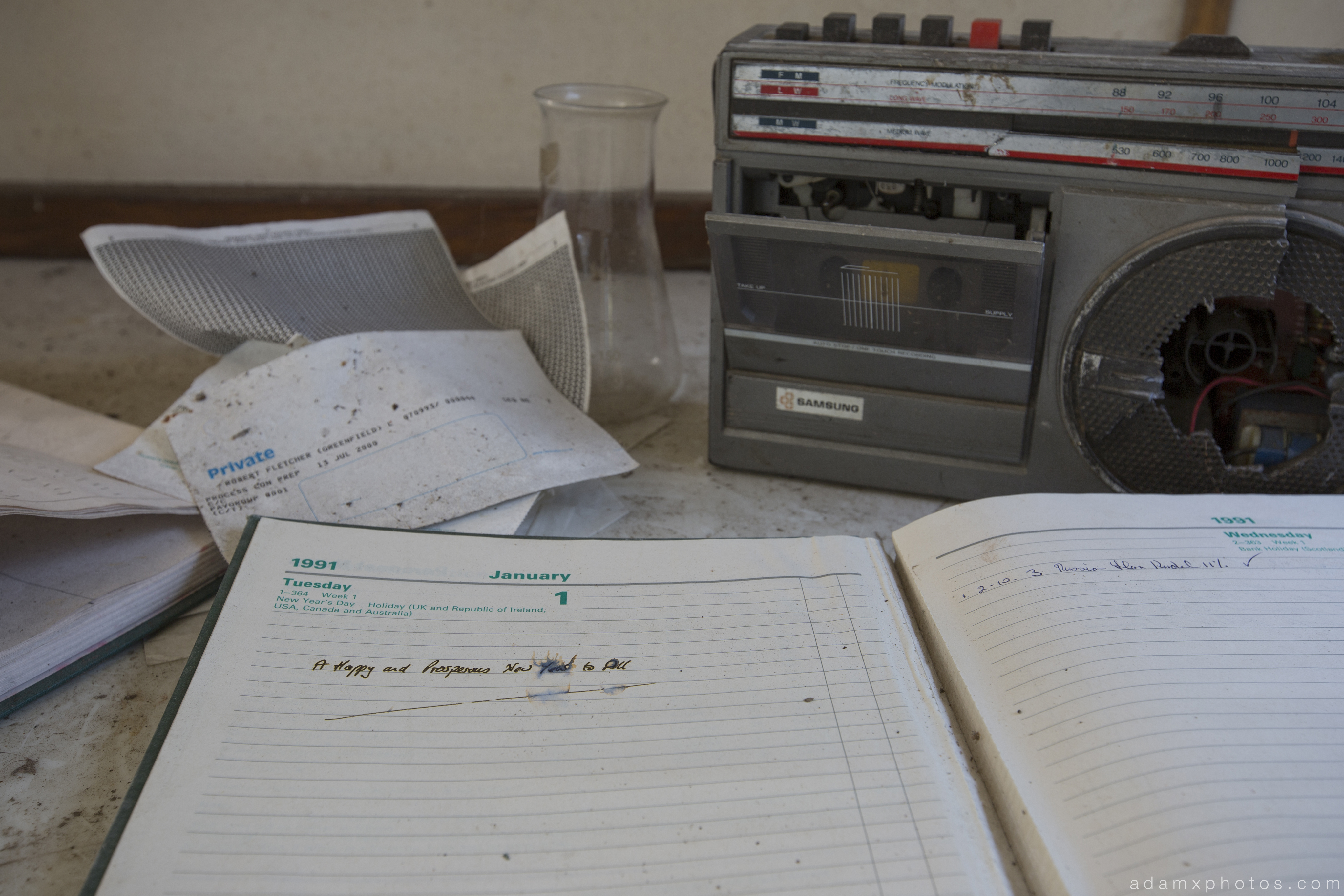

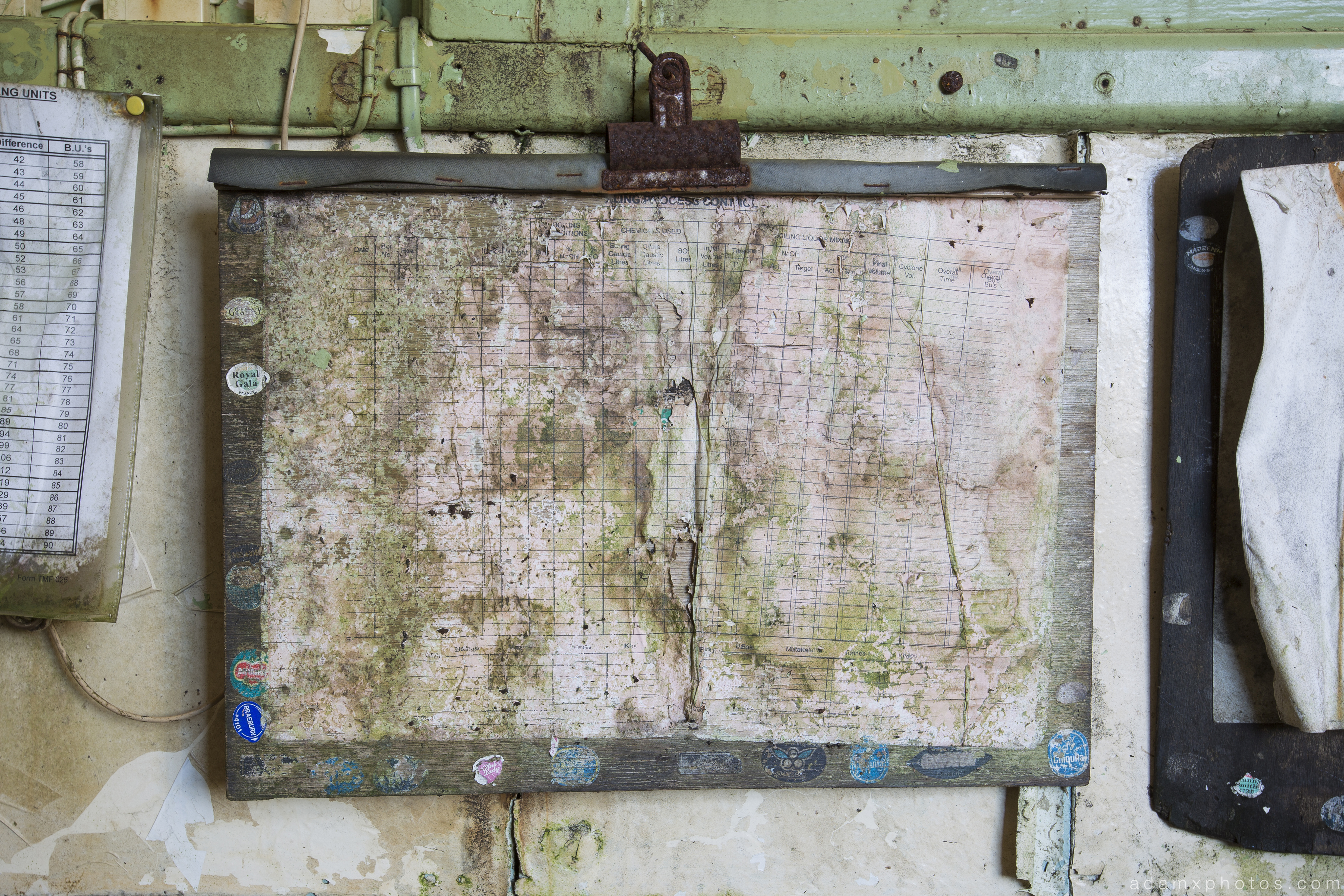

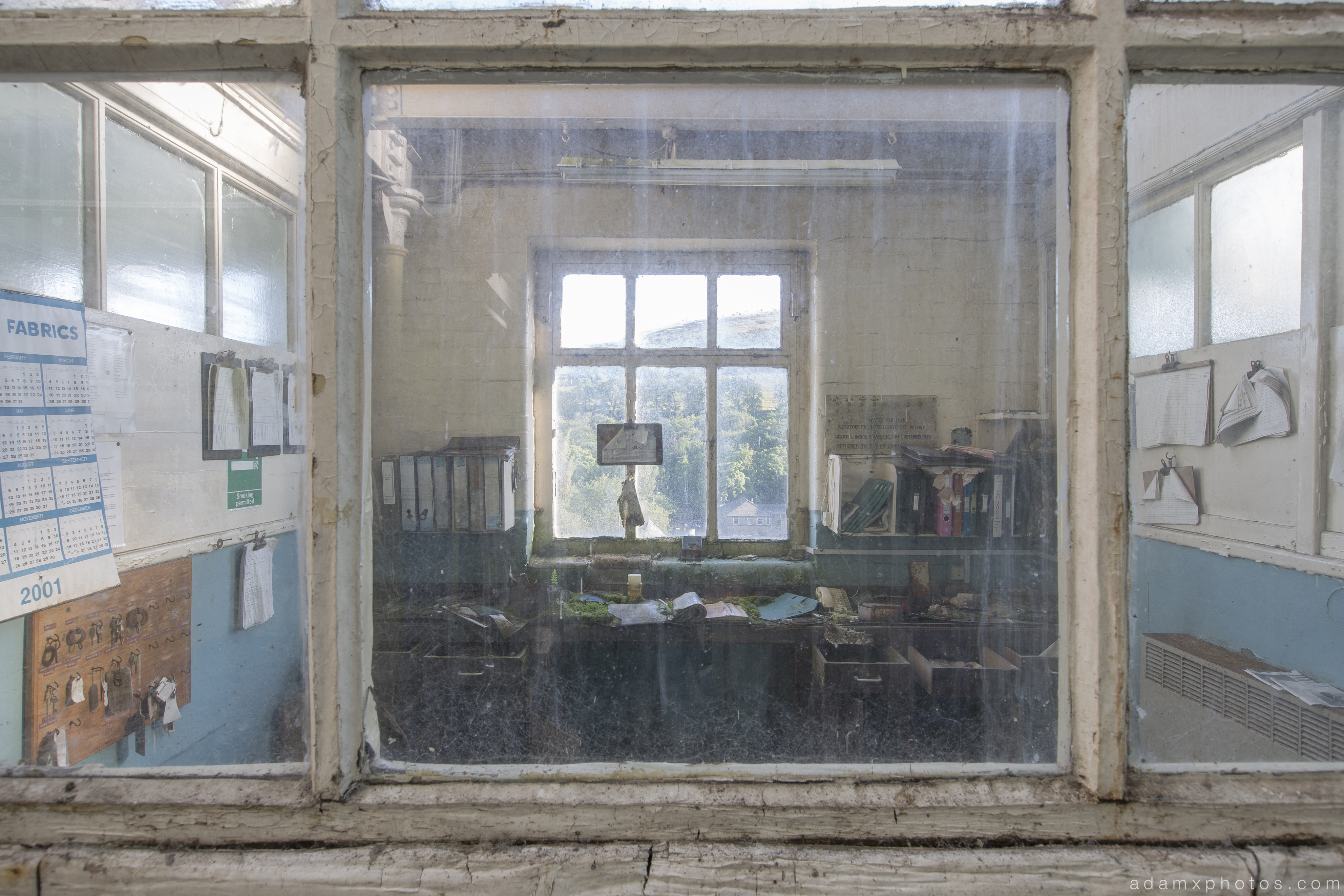
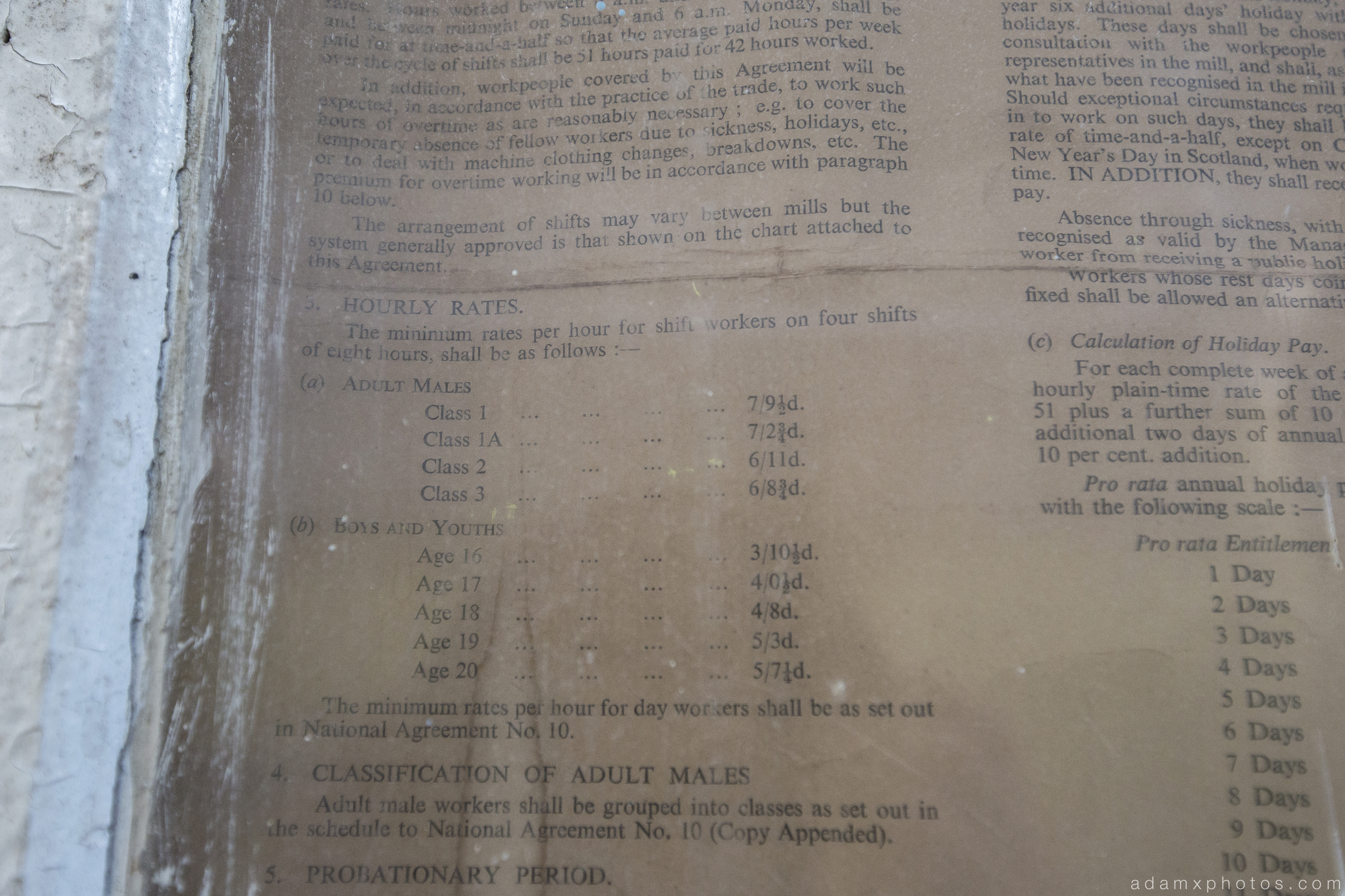
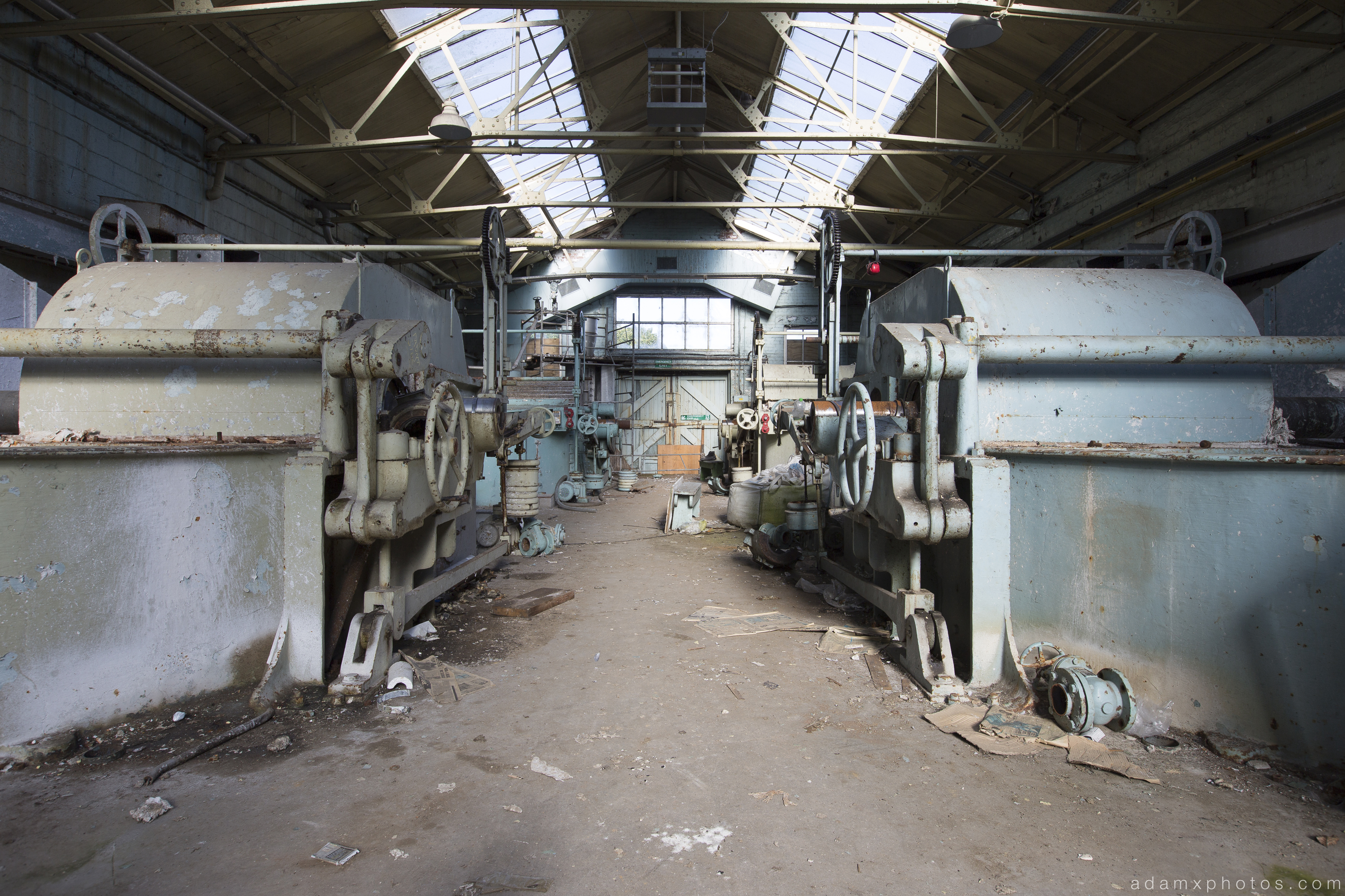

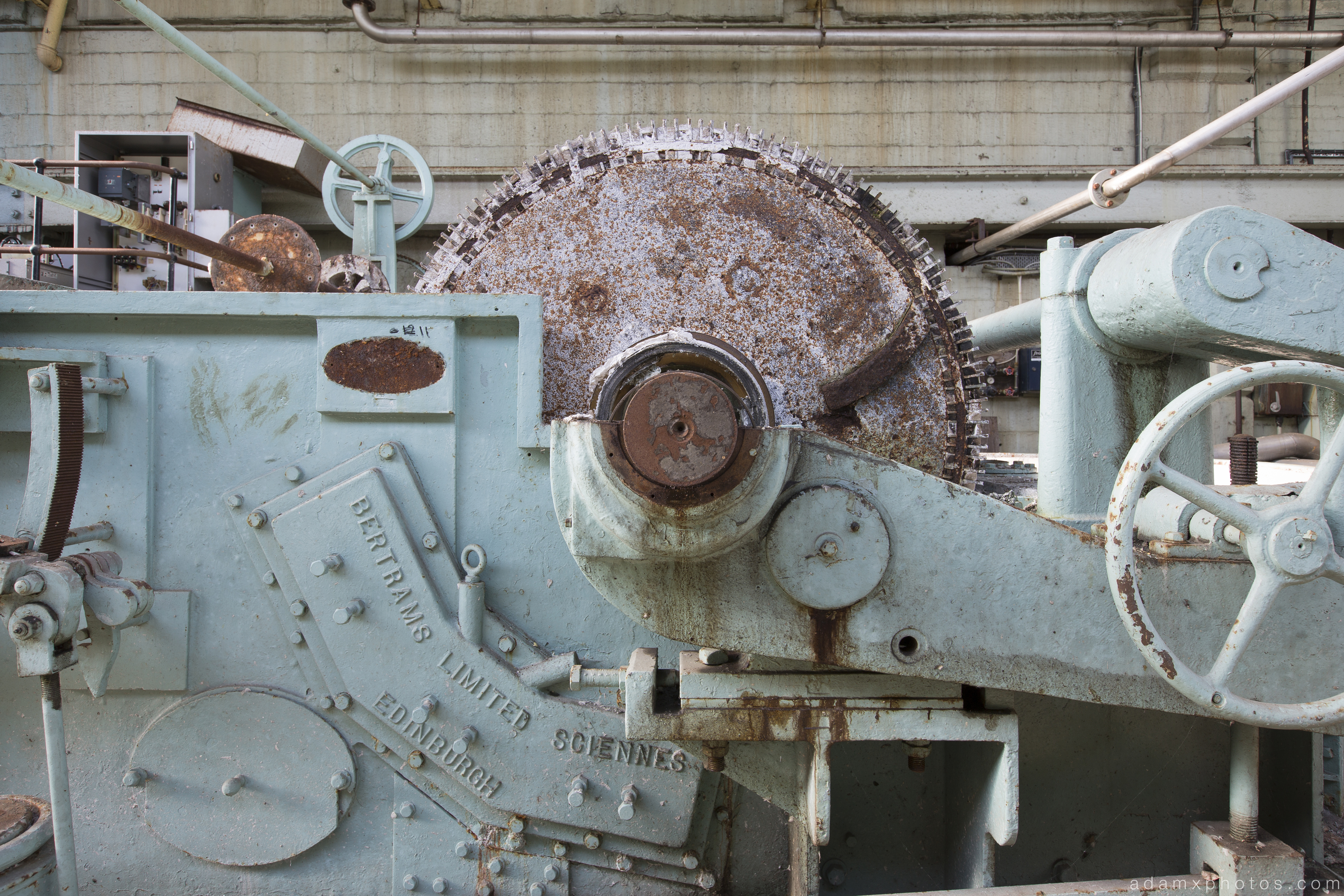
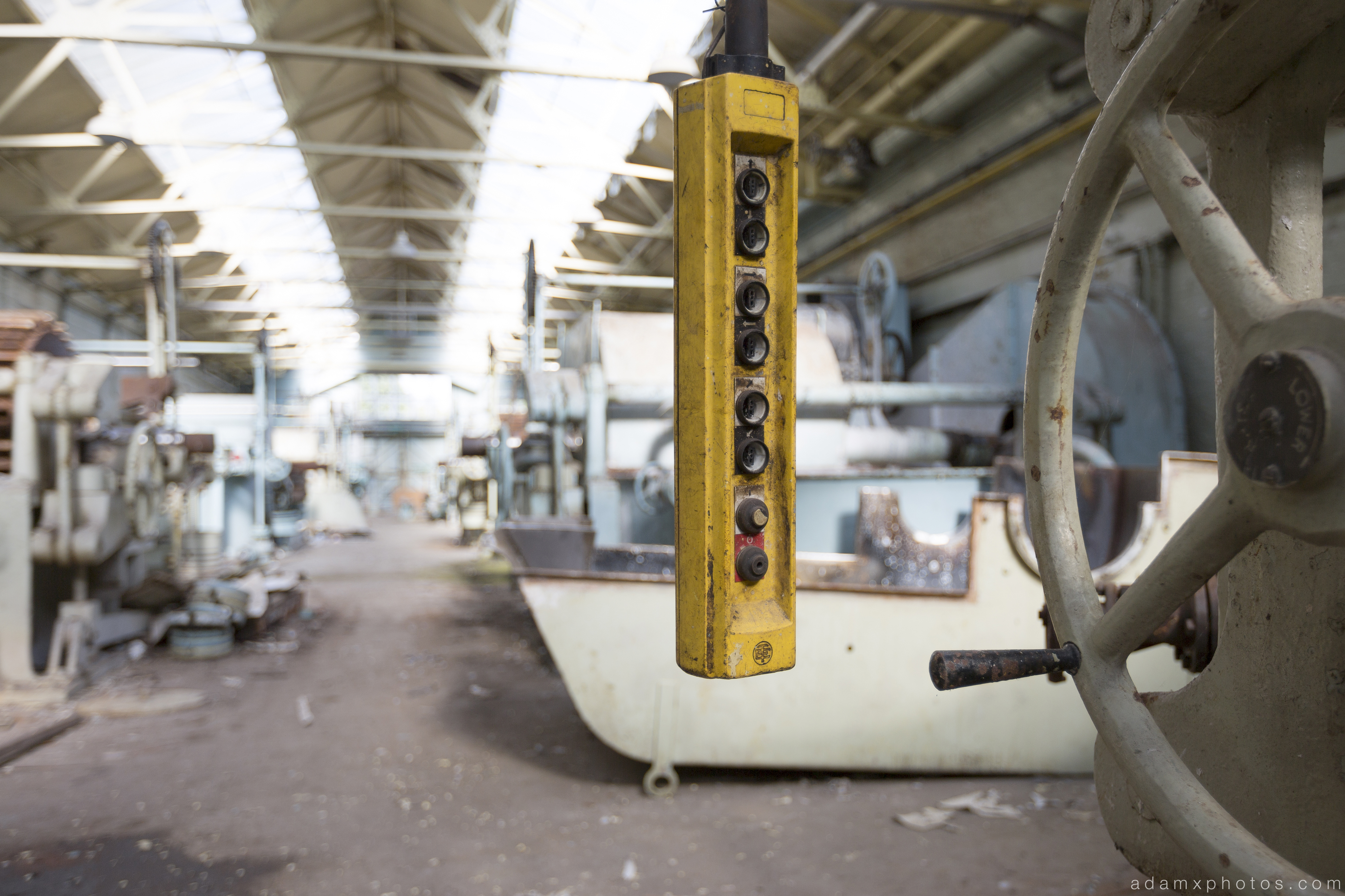
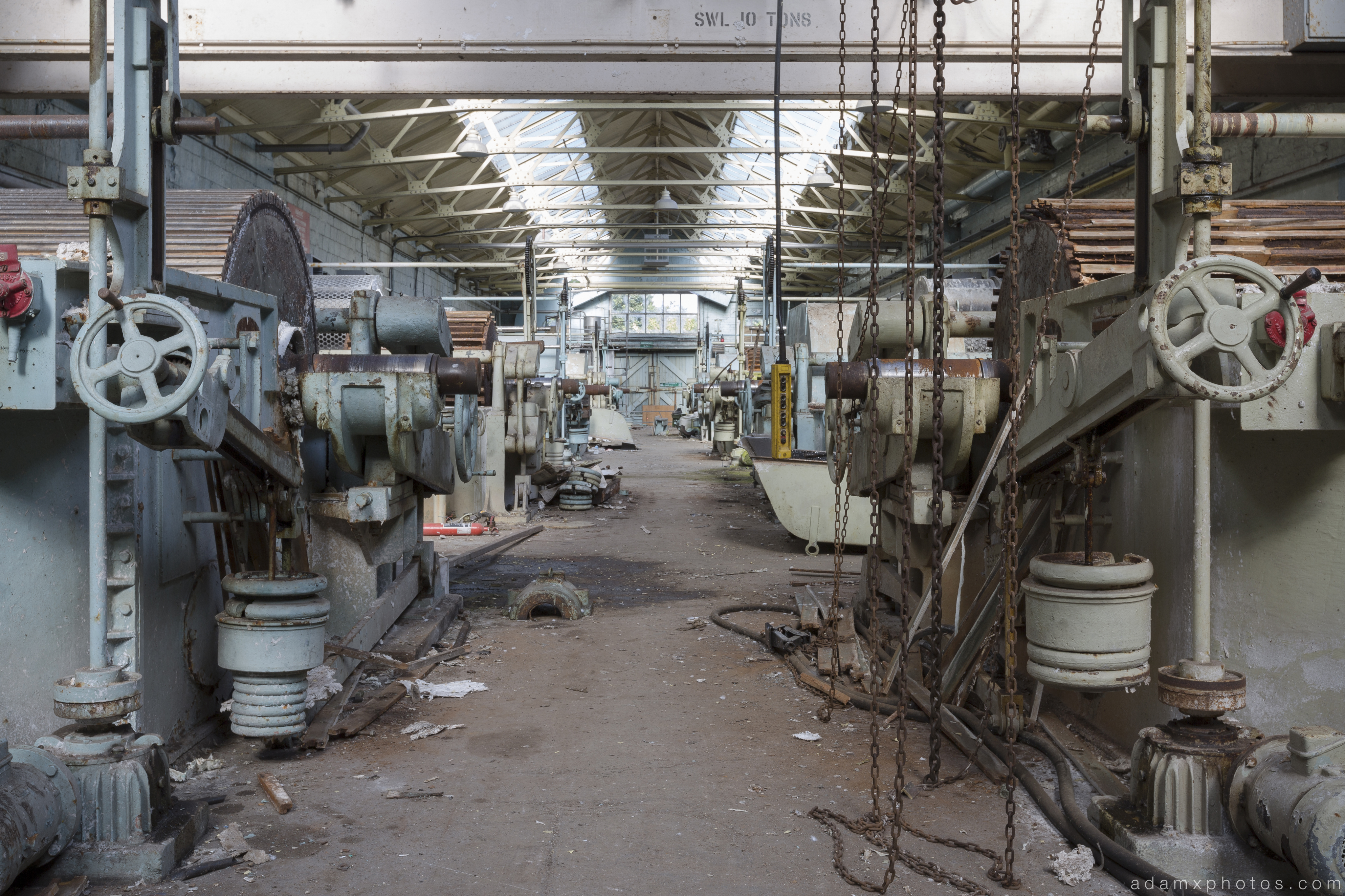
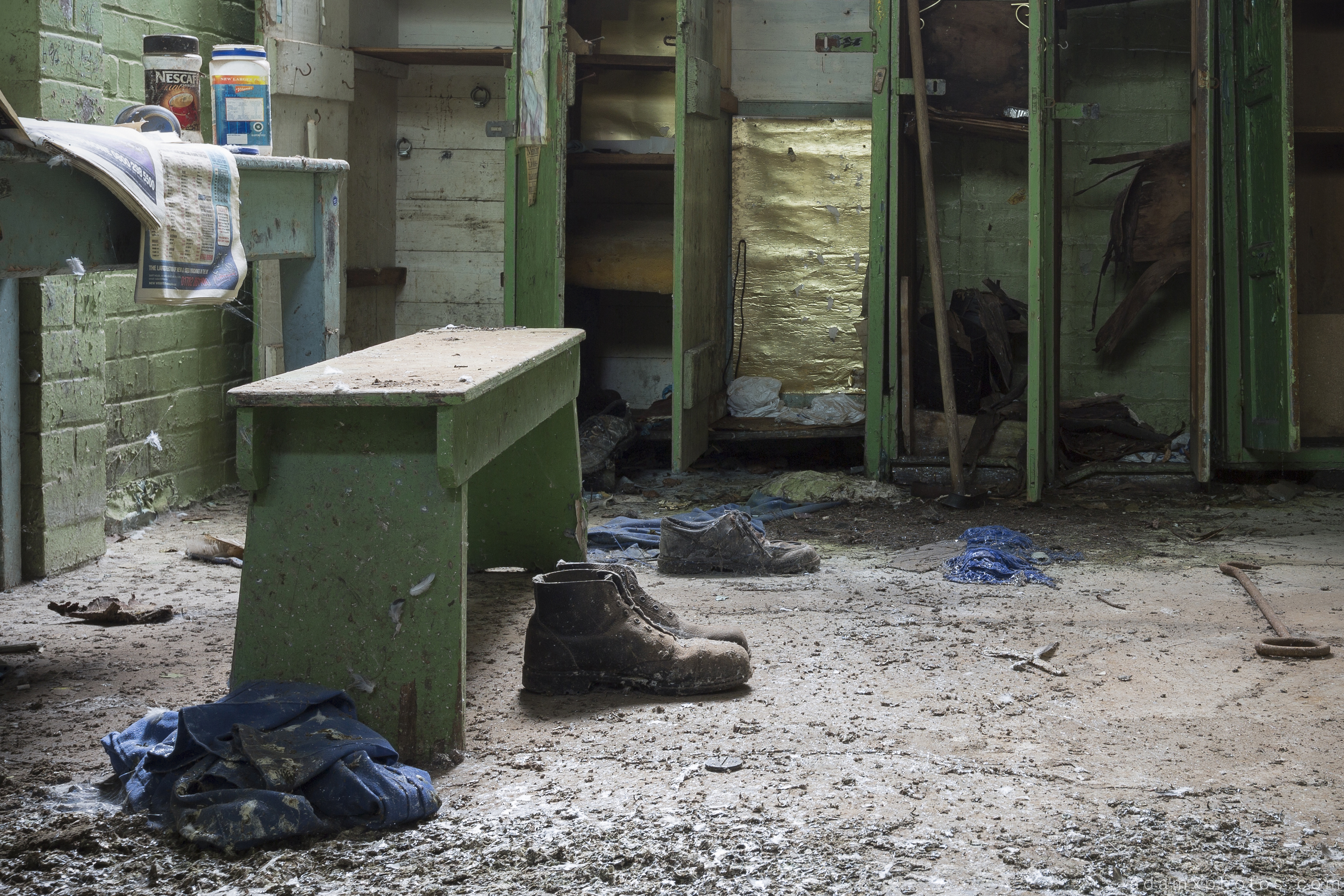


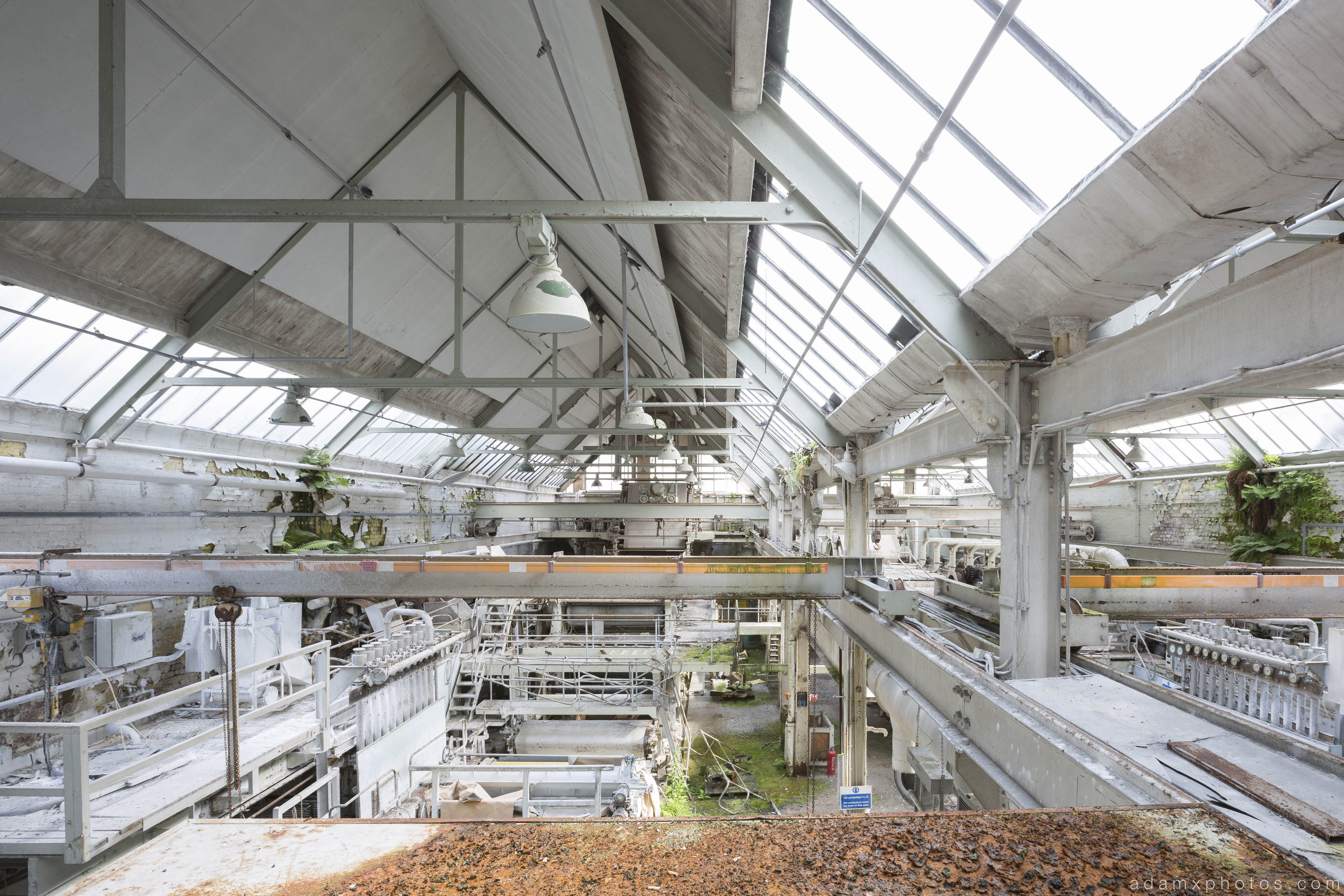


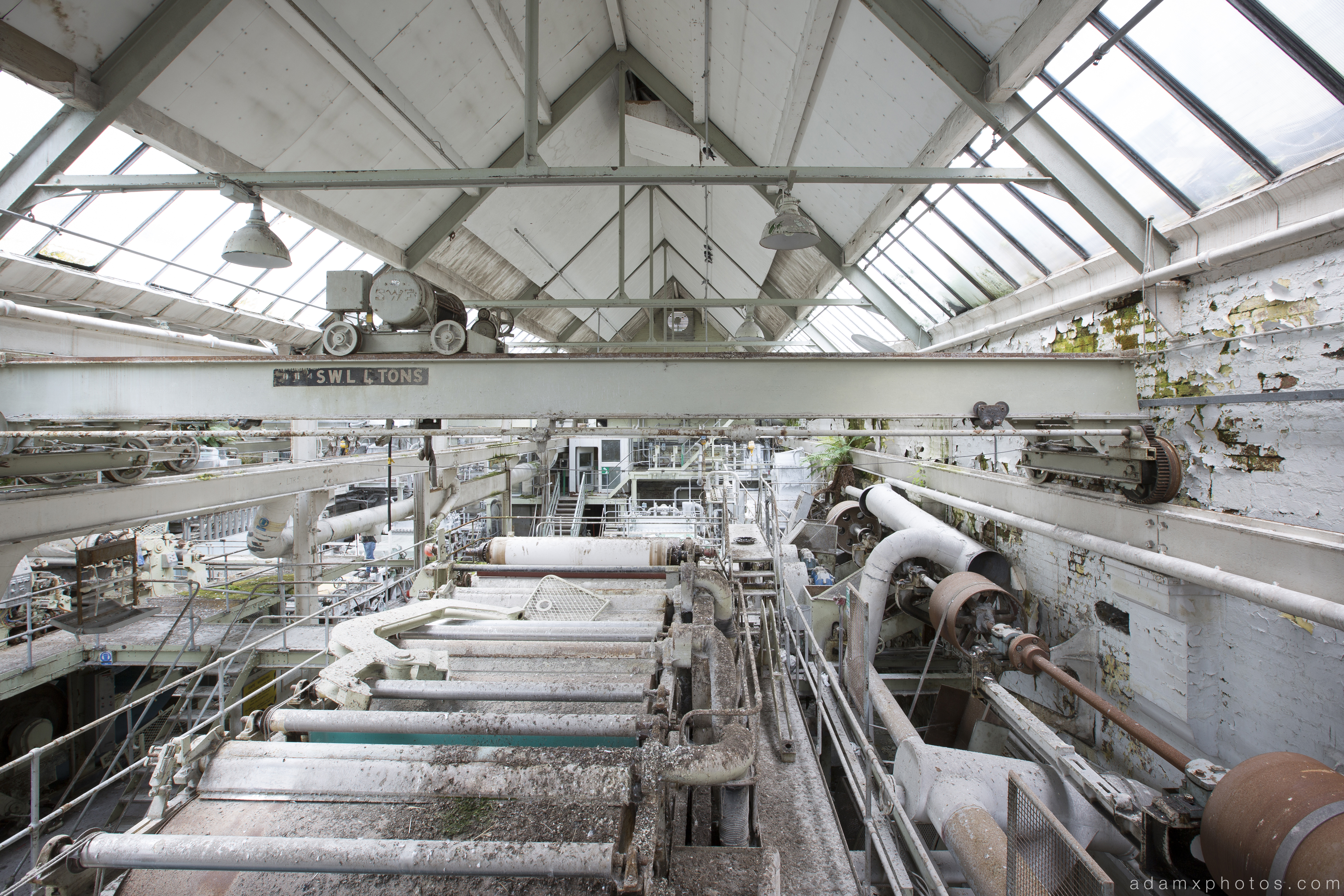

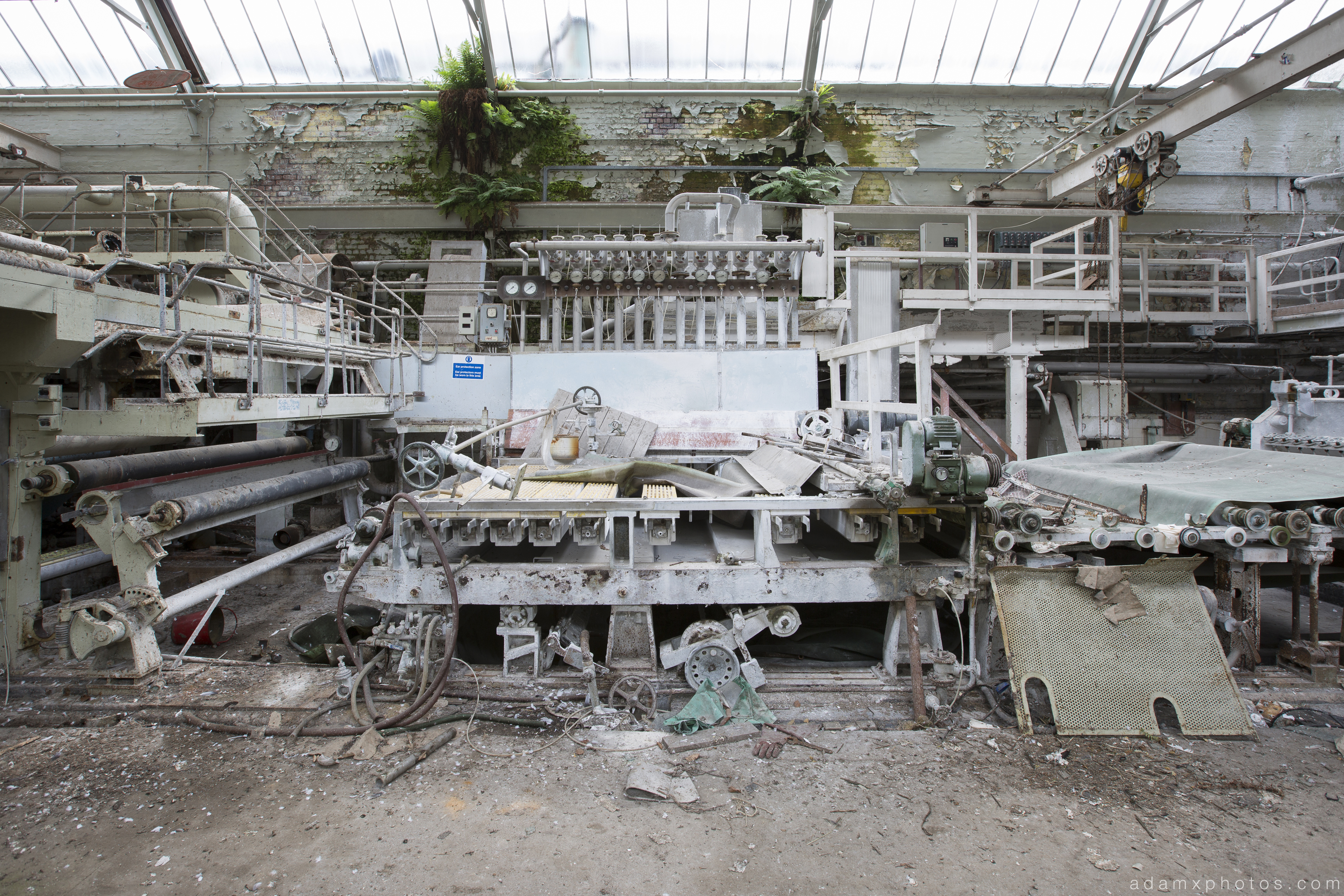
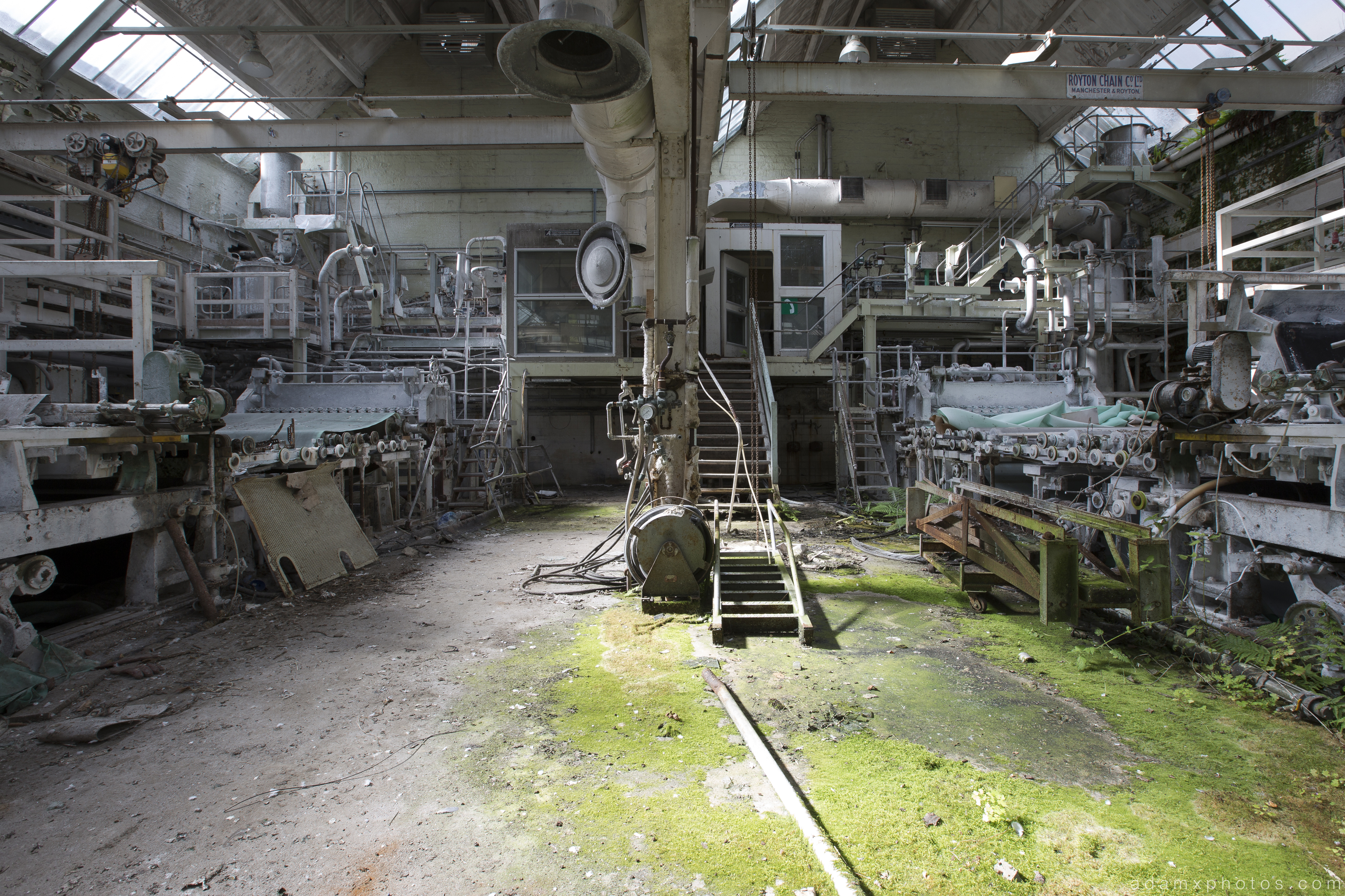


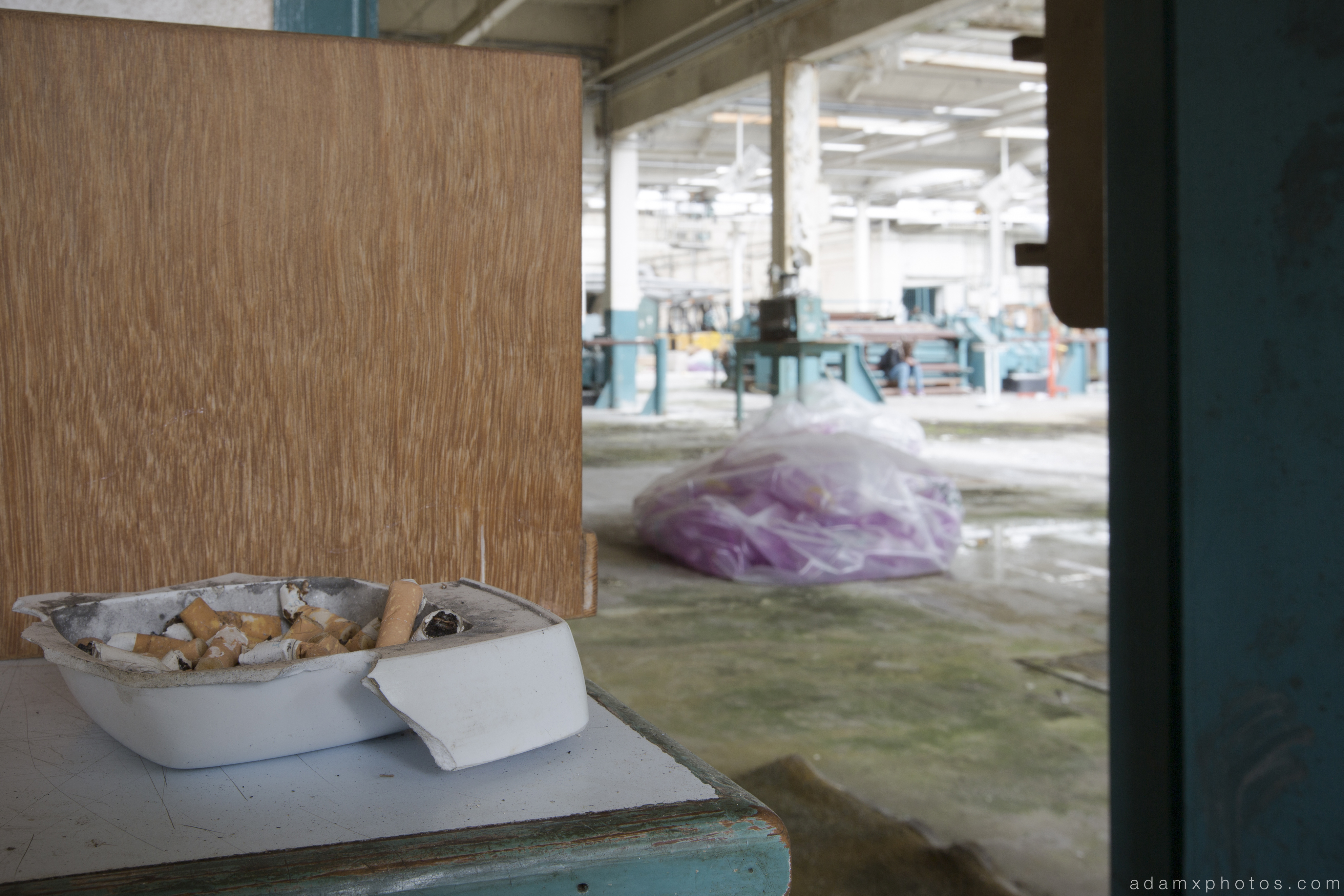
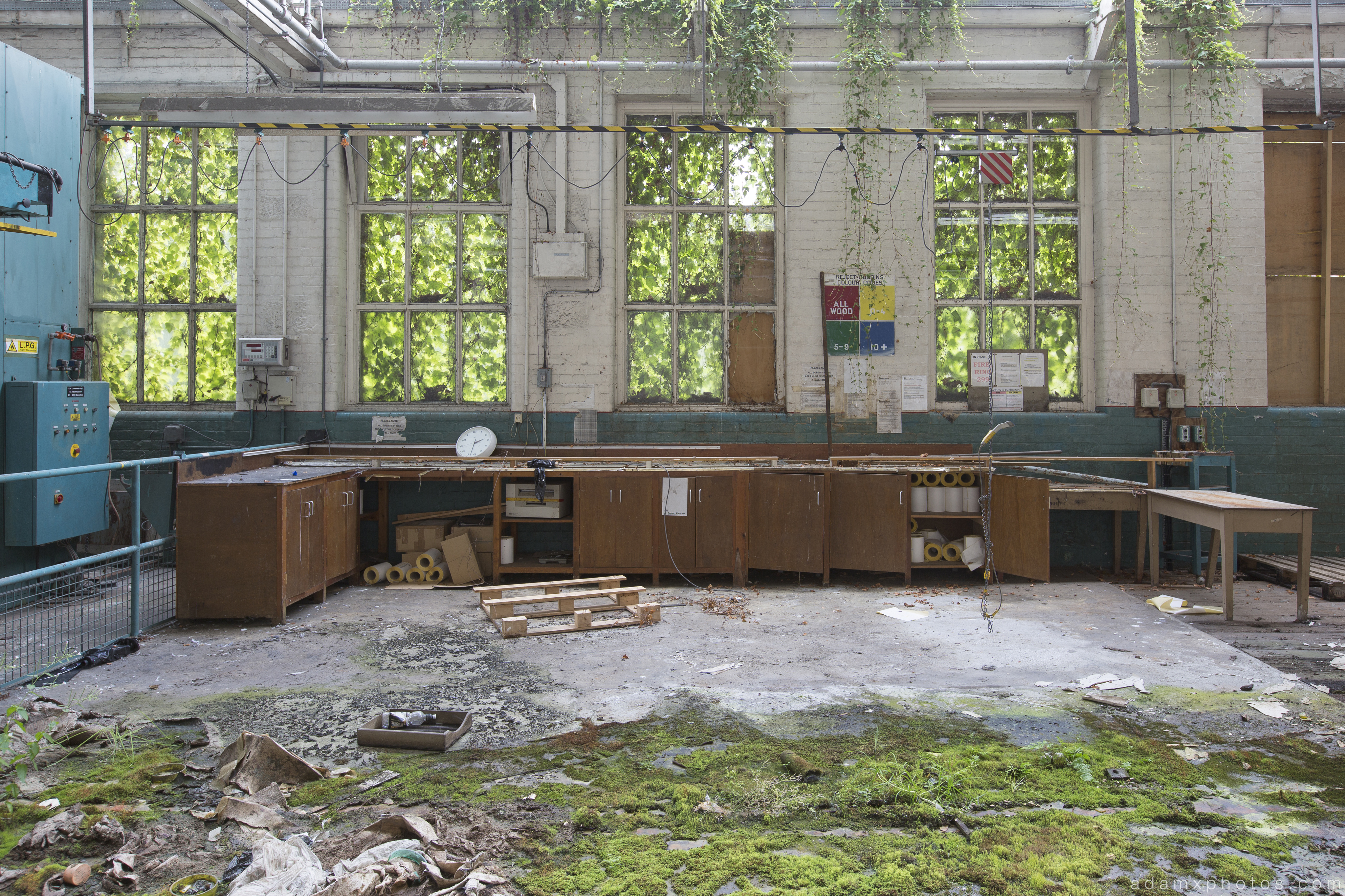

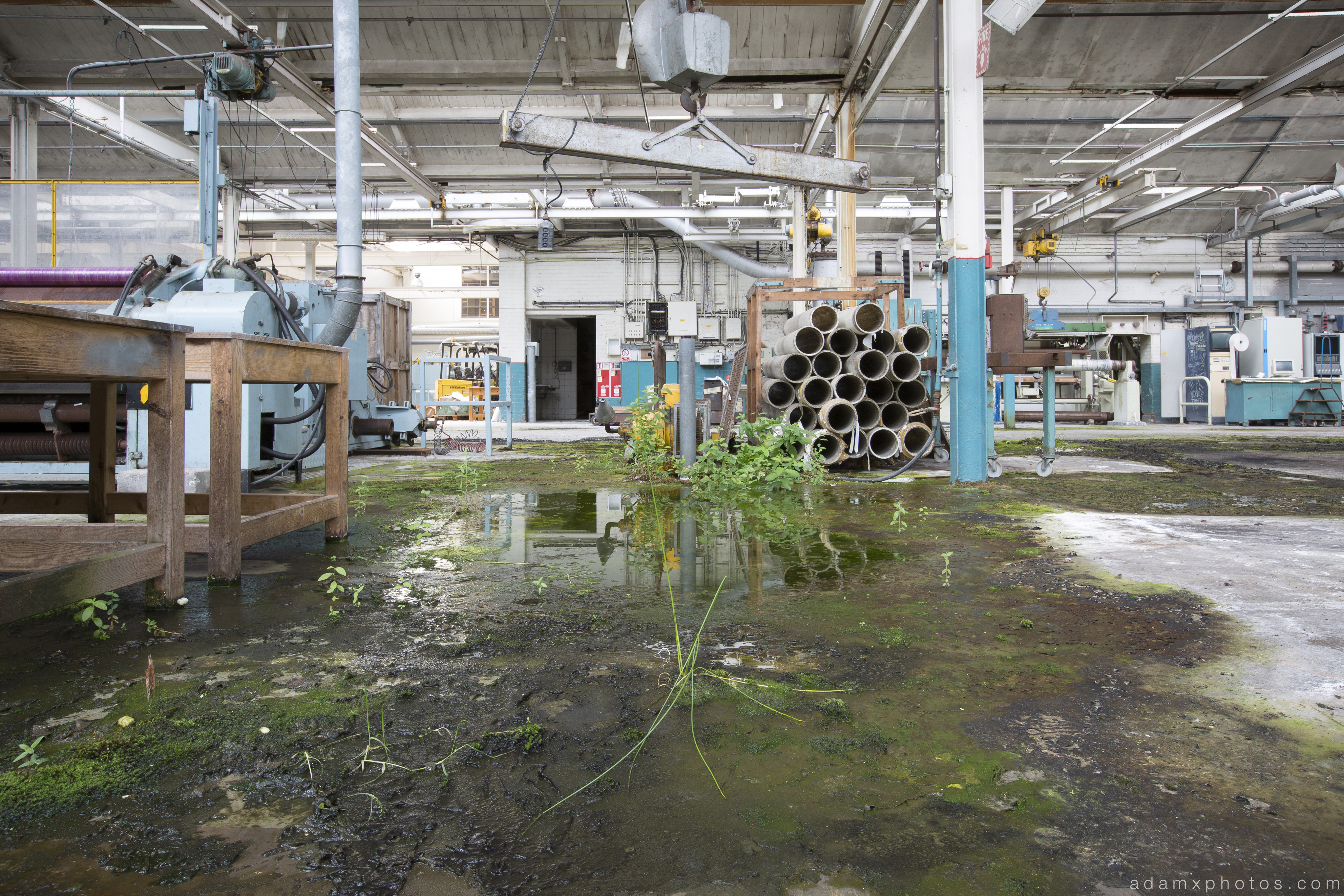
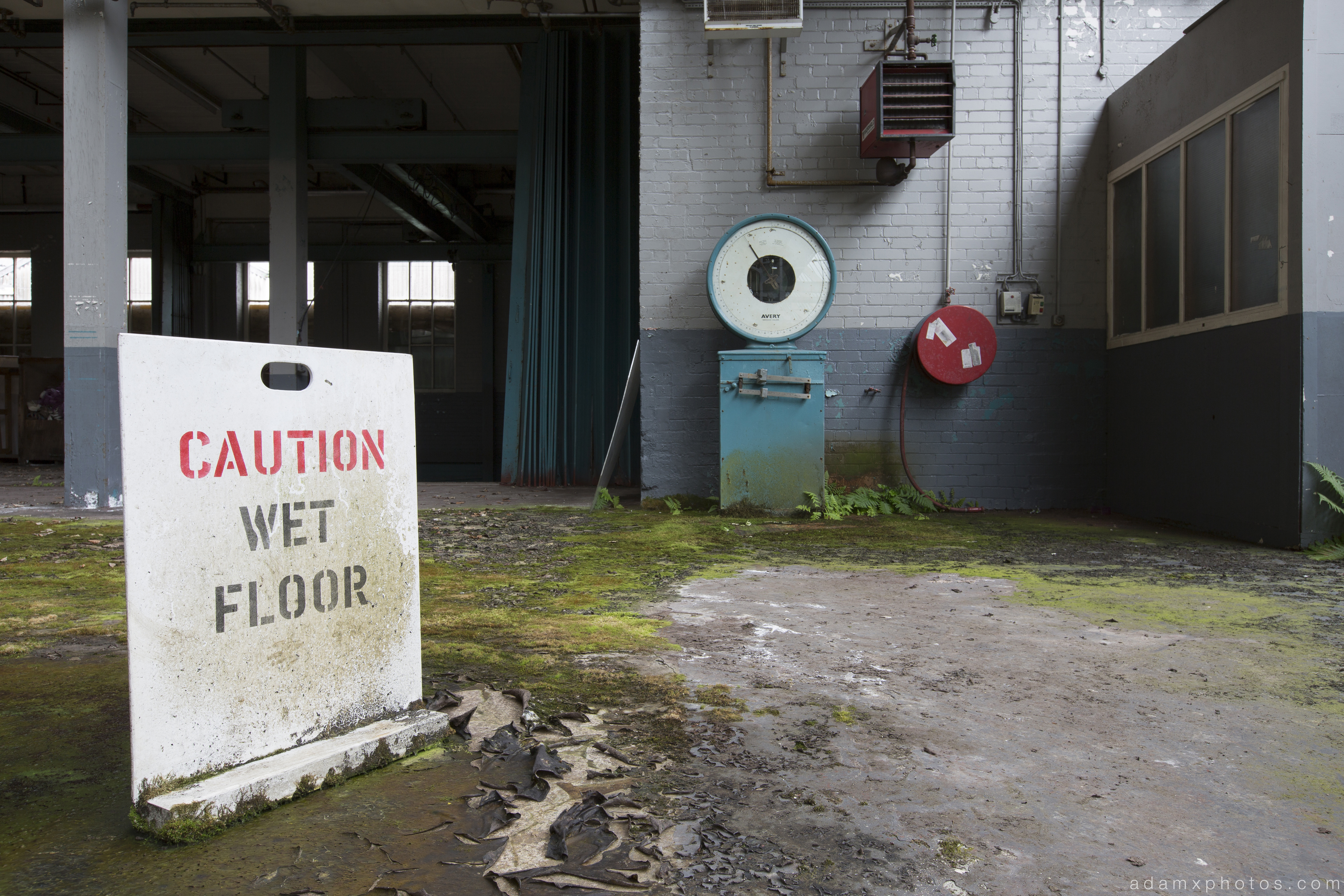
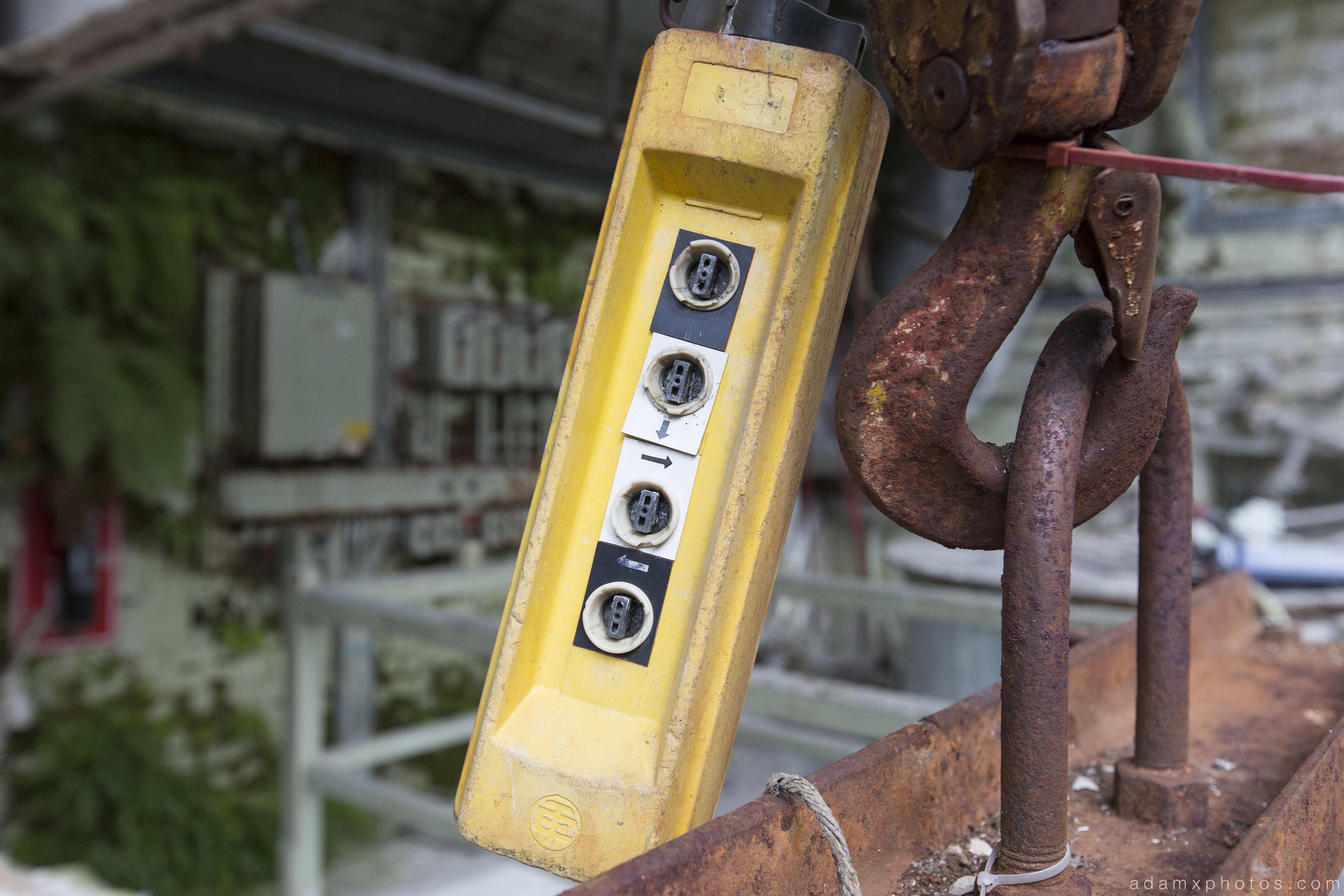
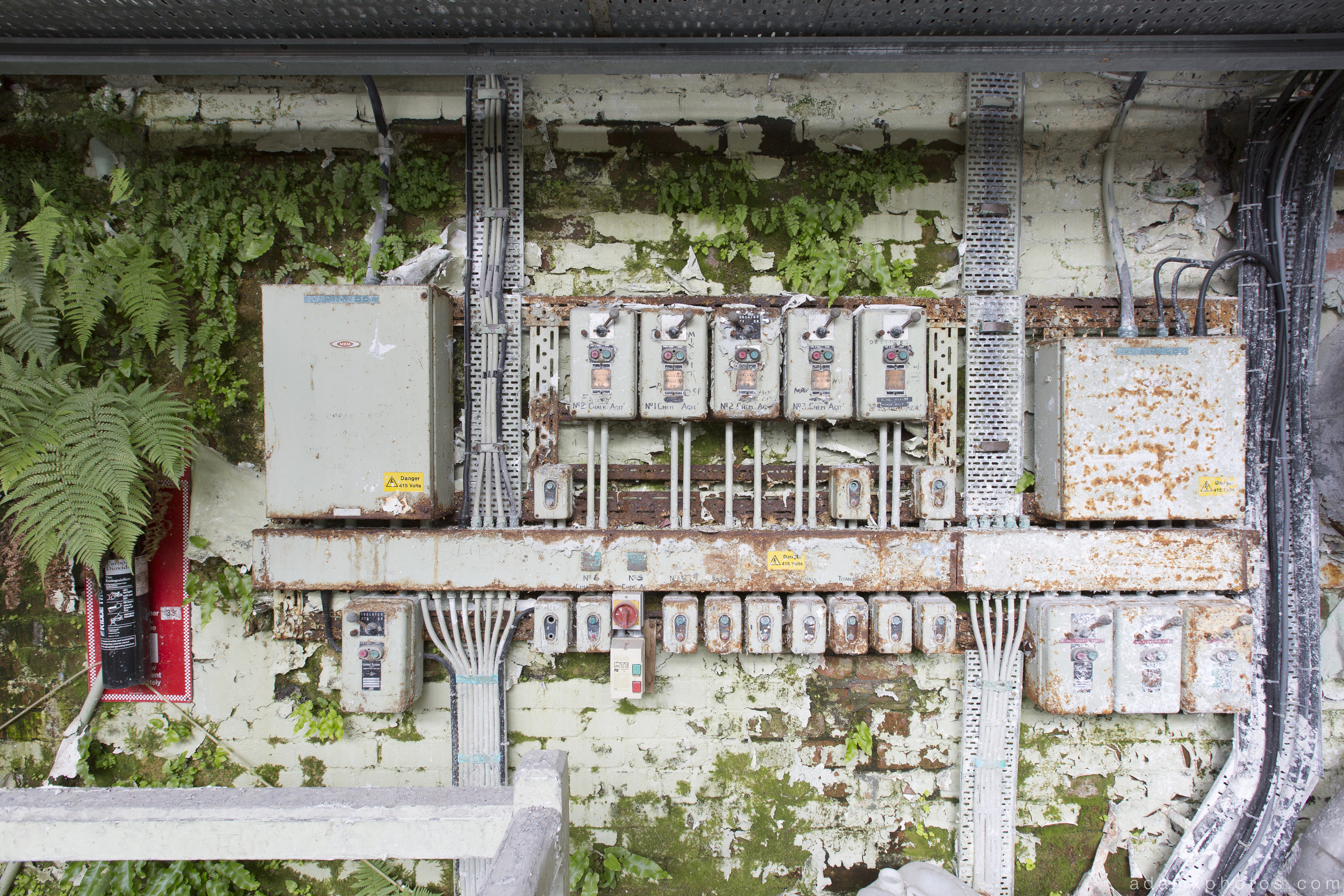
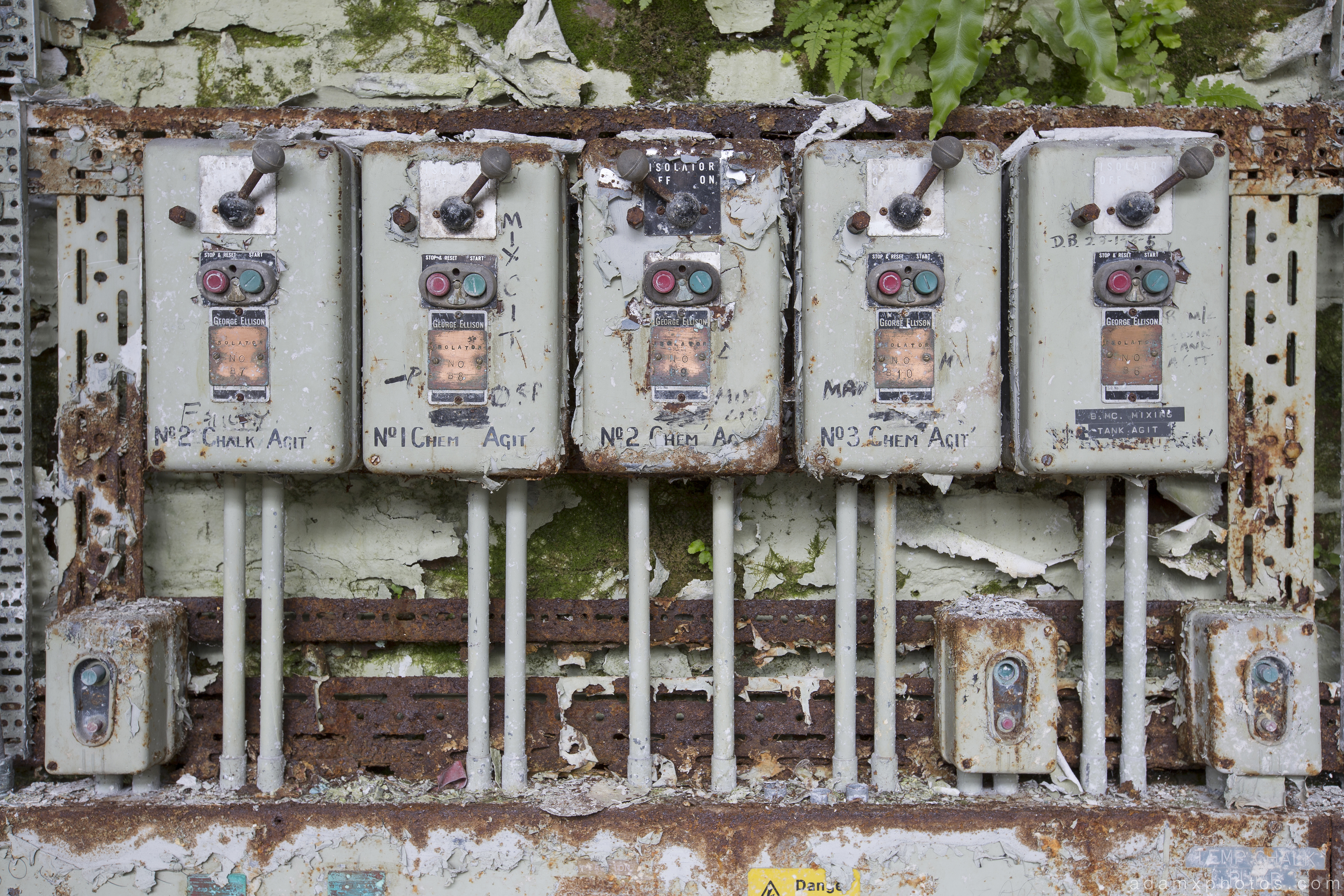
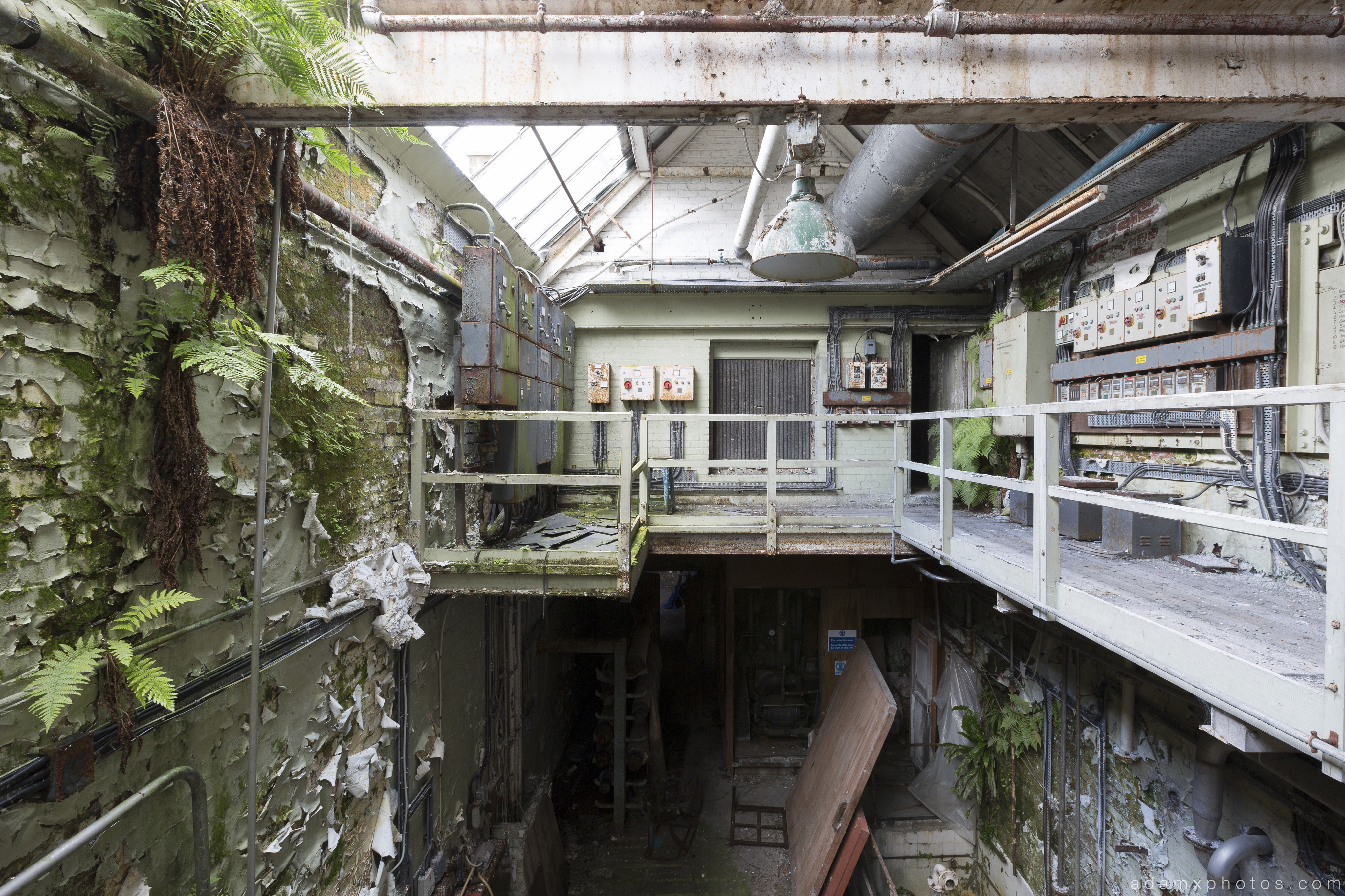
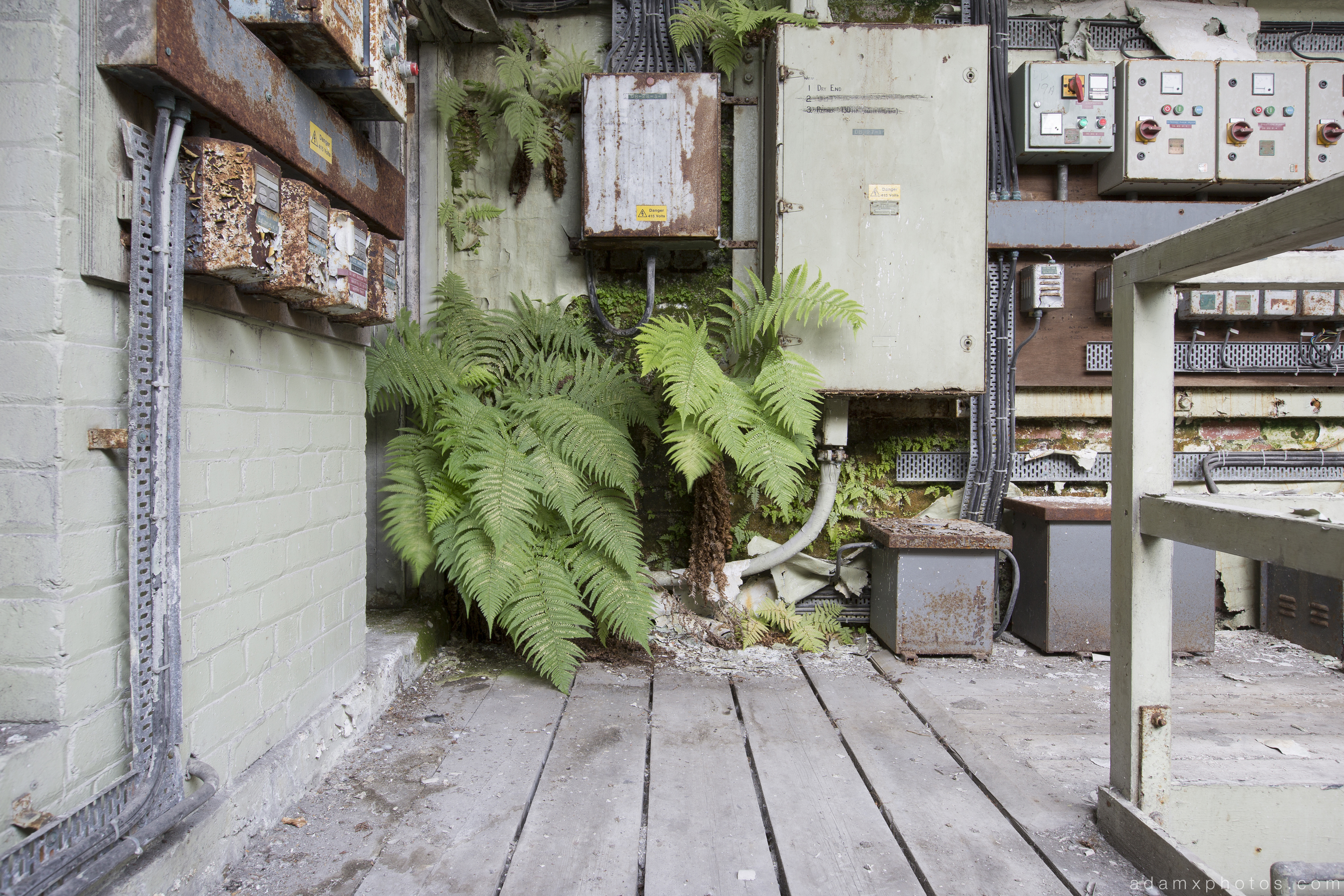

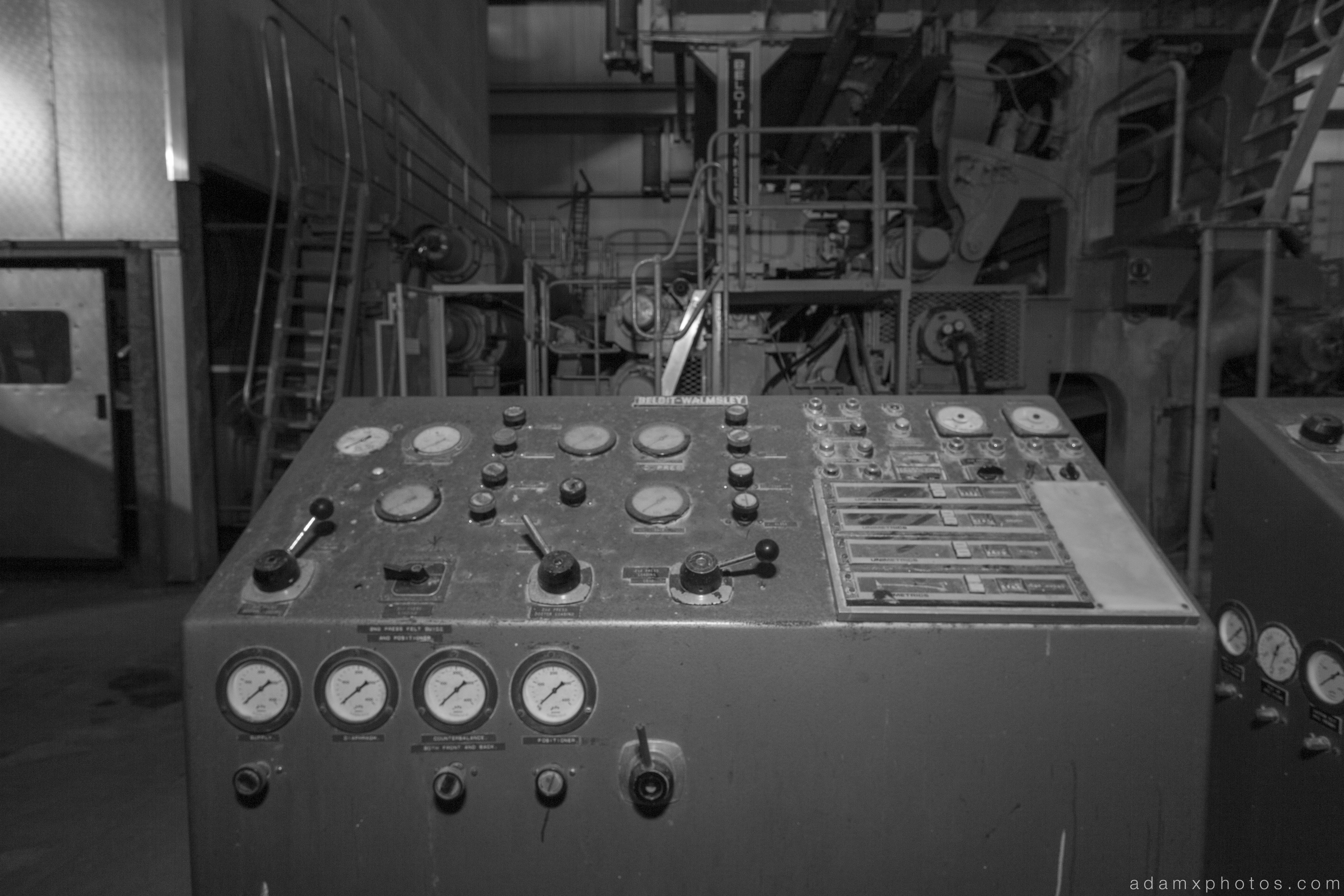
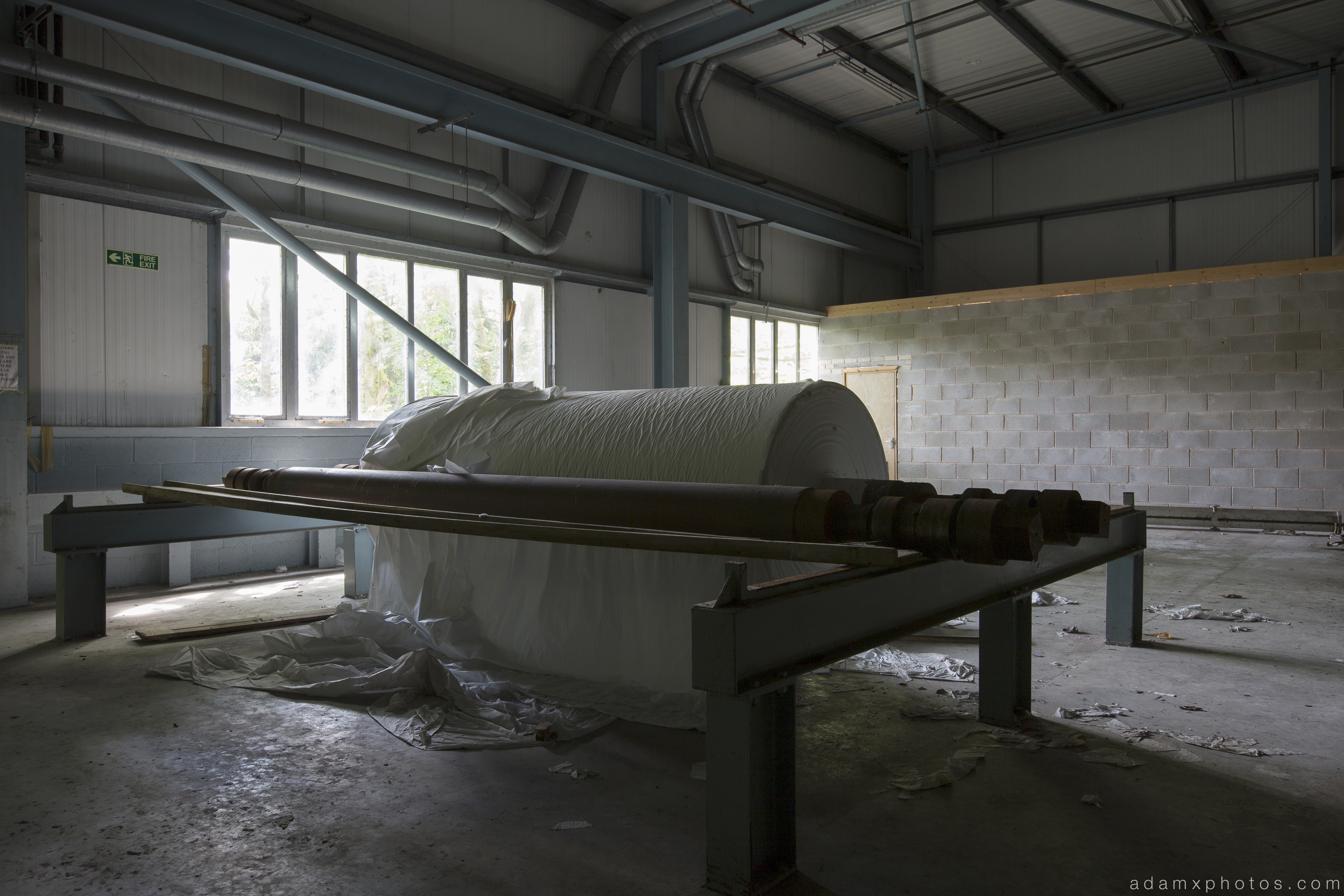



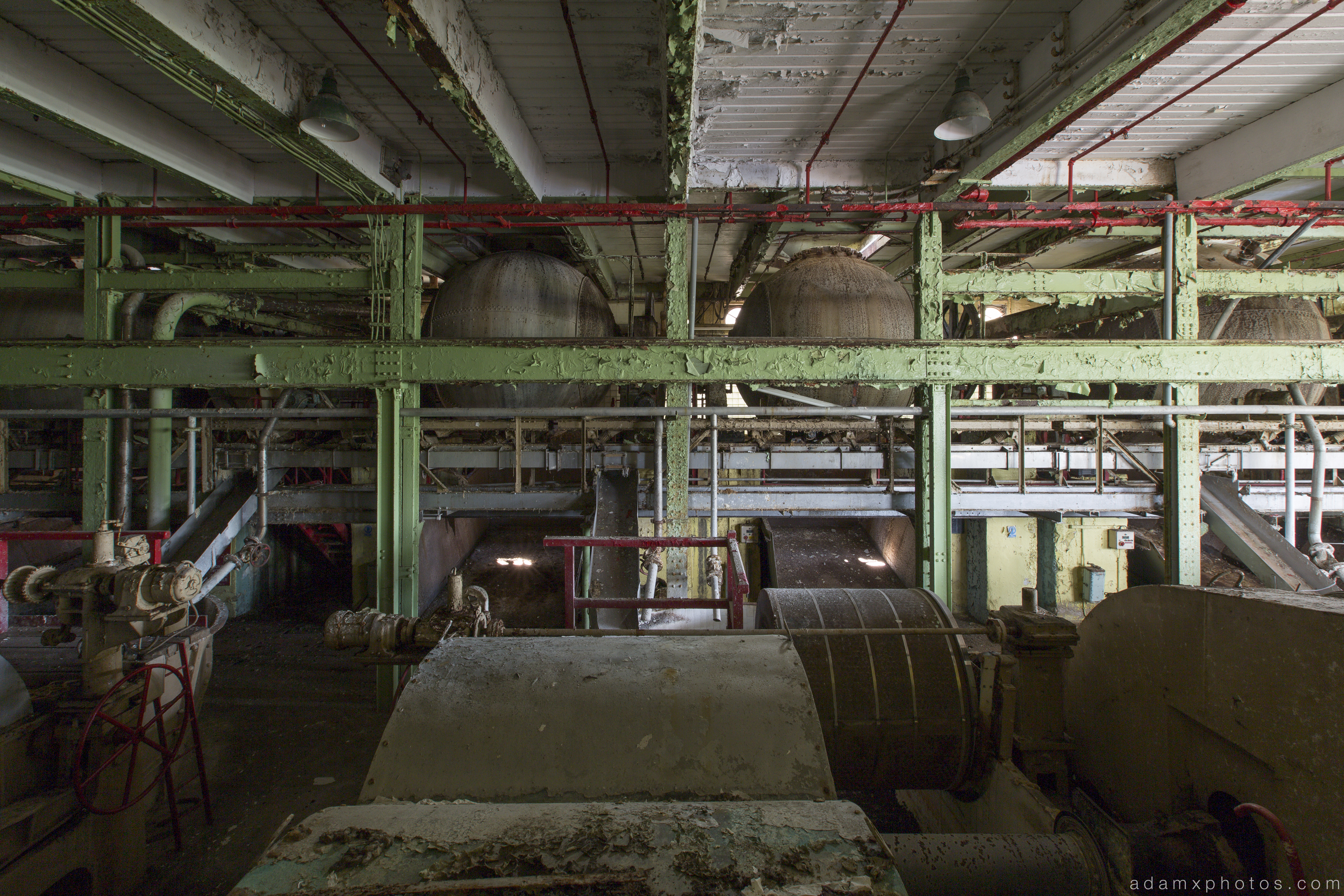
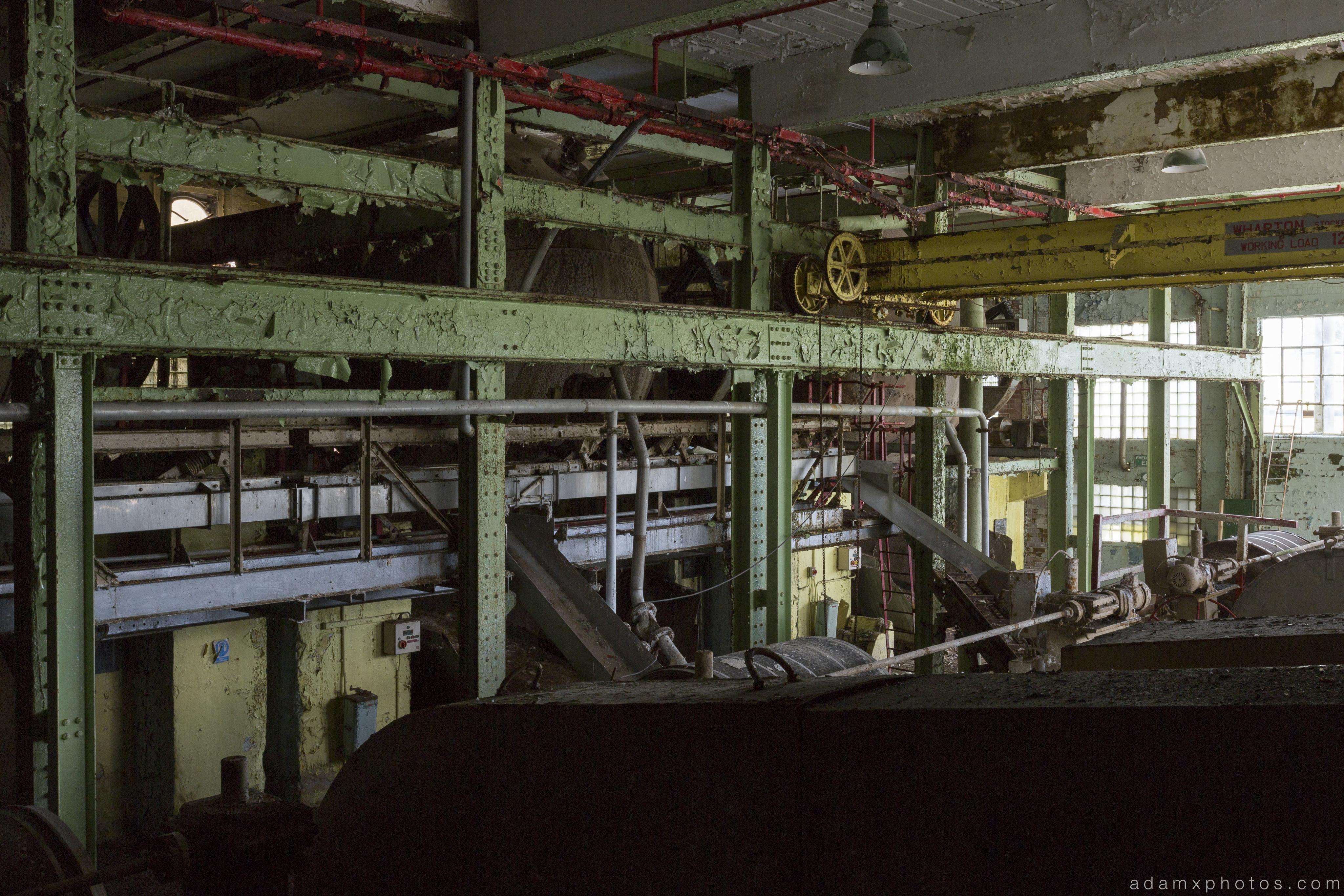

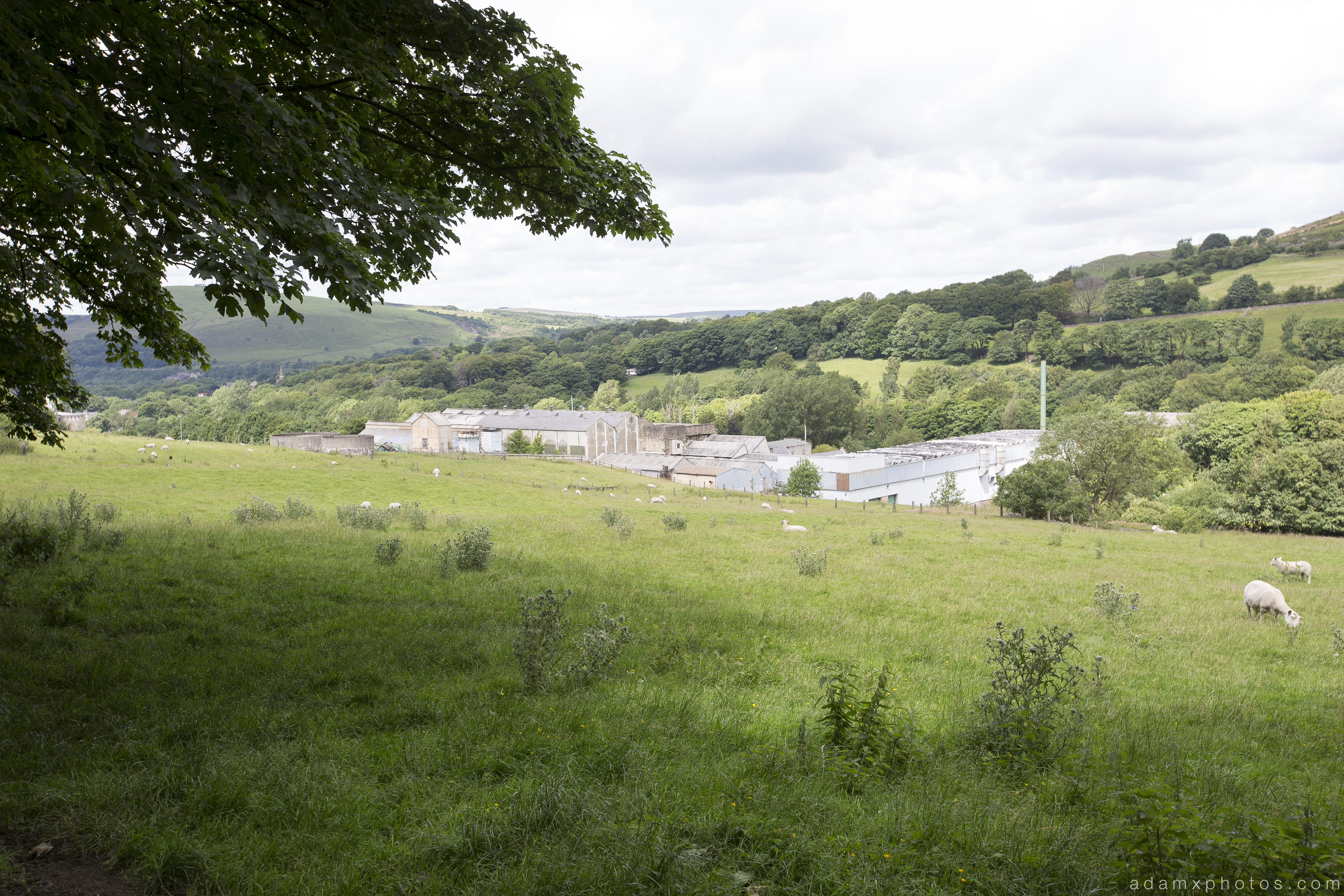
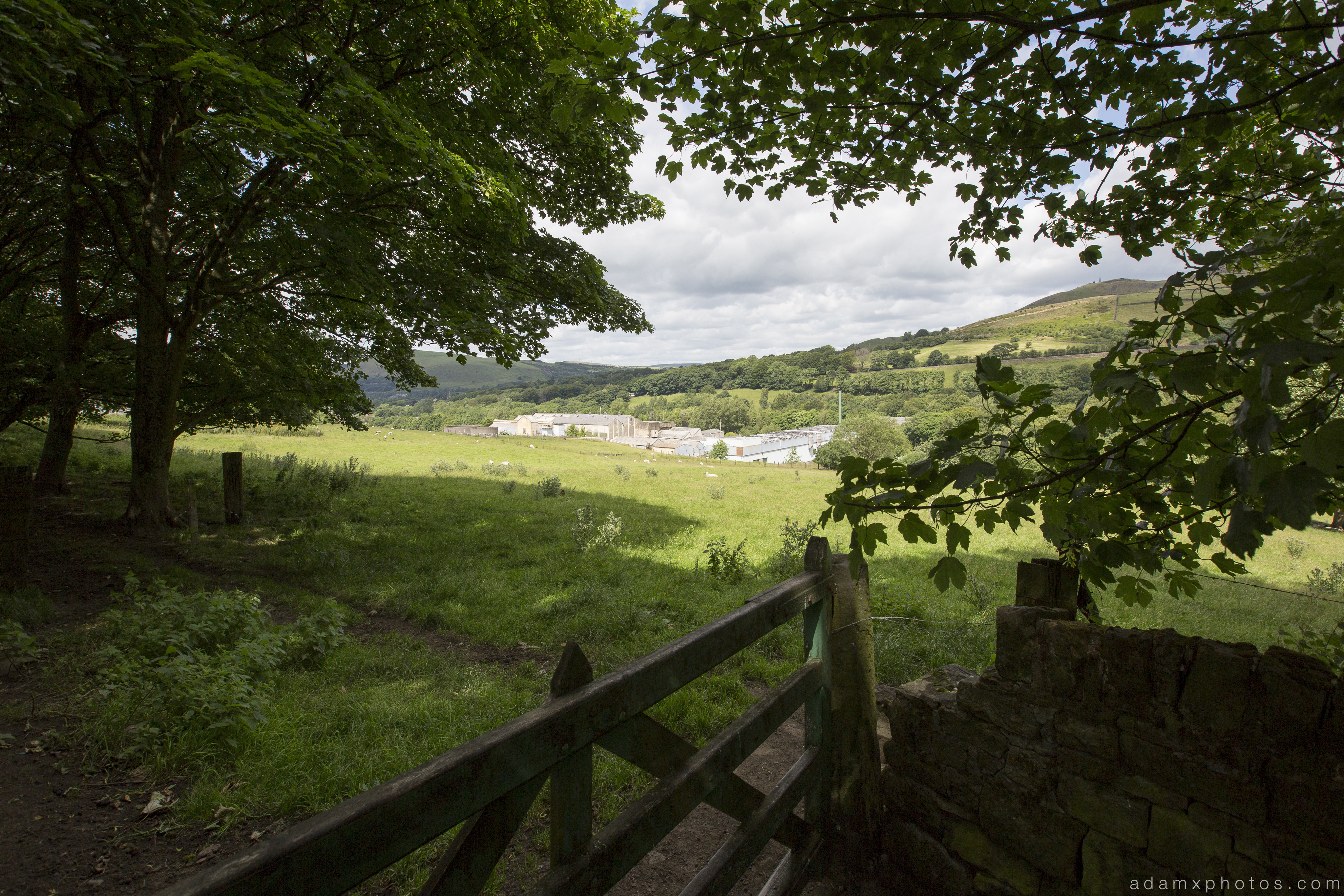
One comment